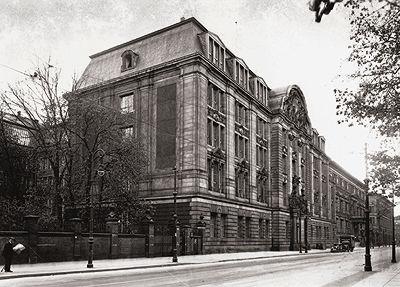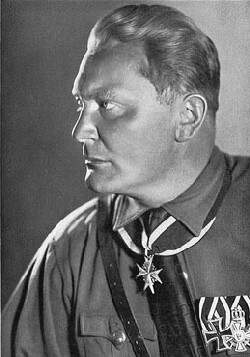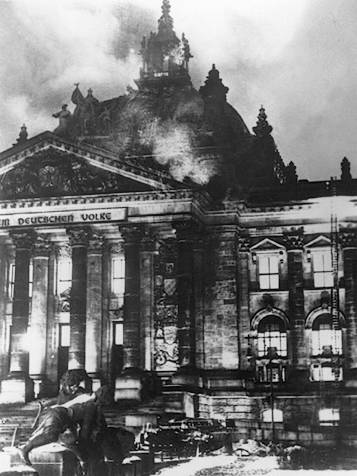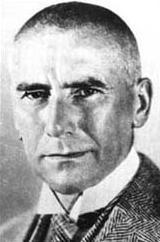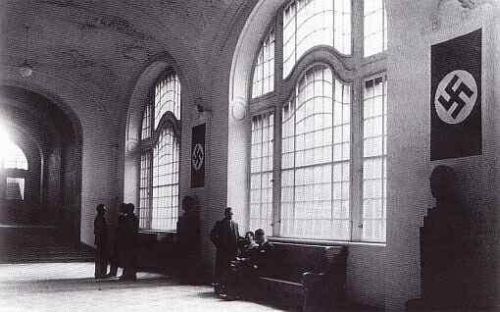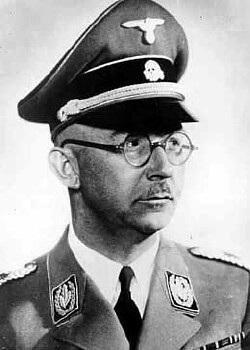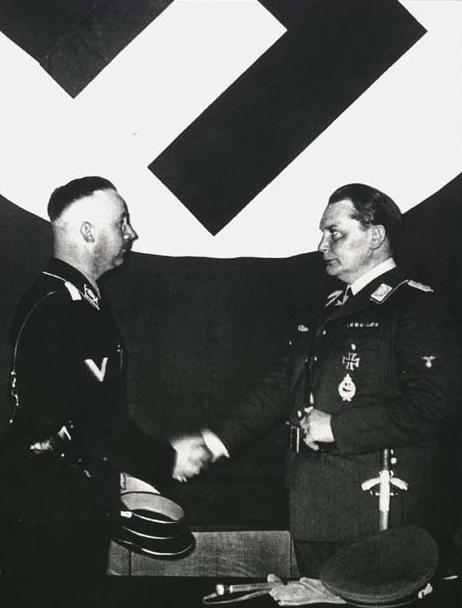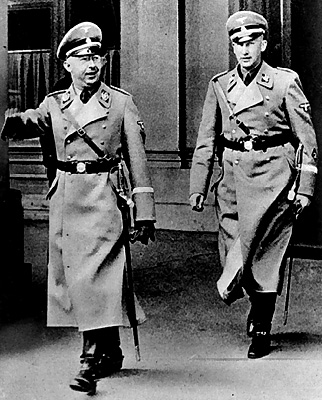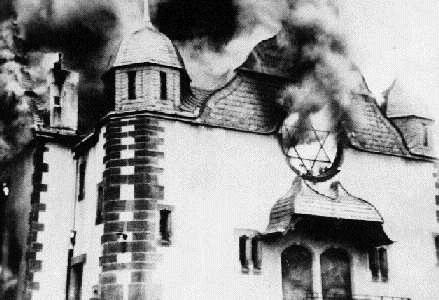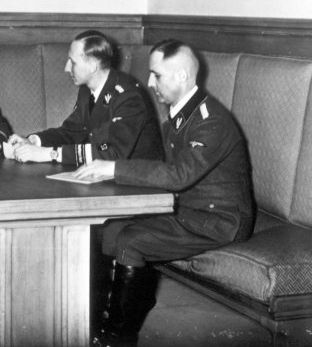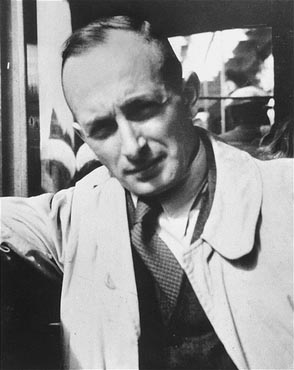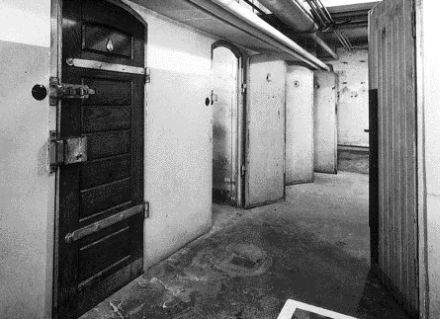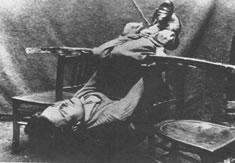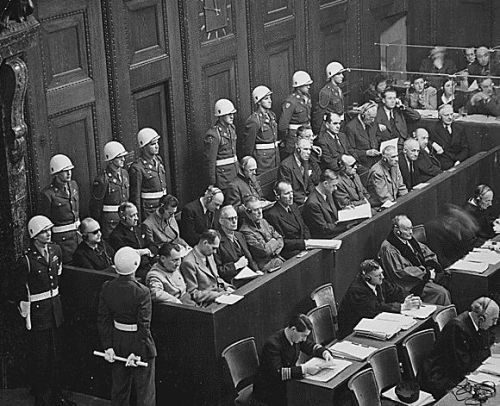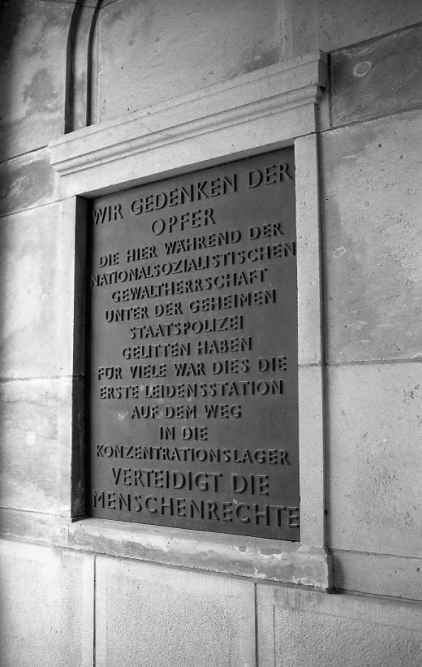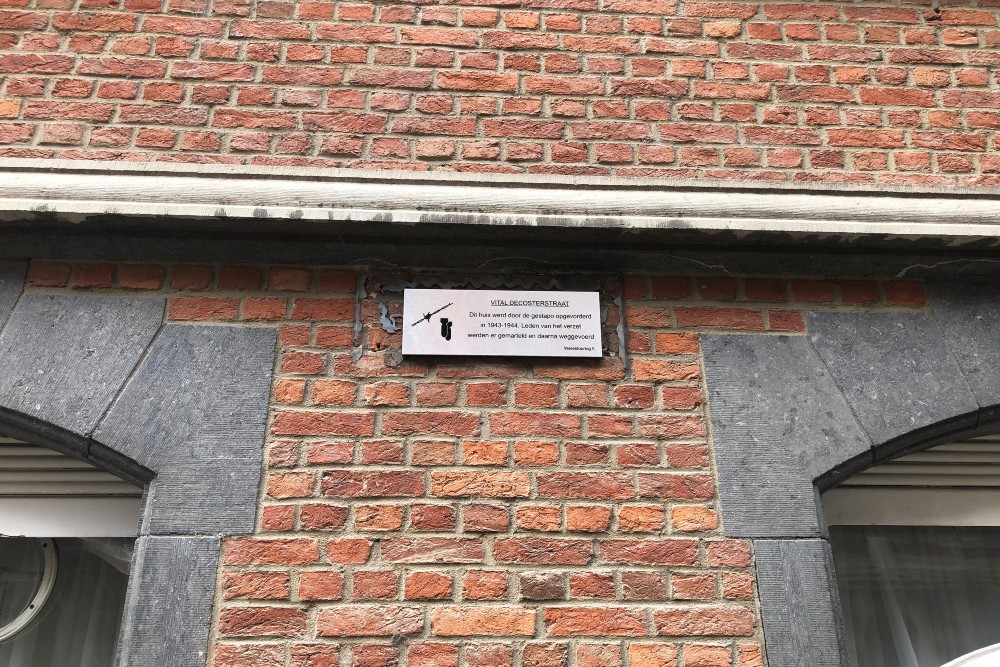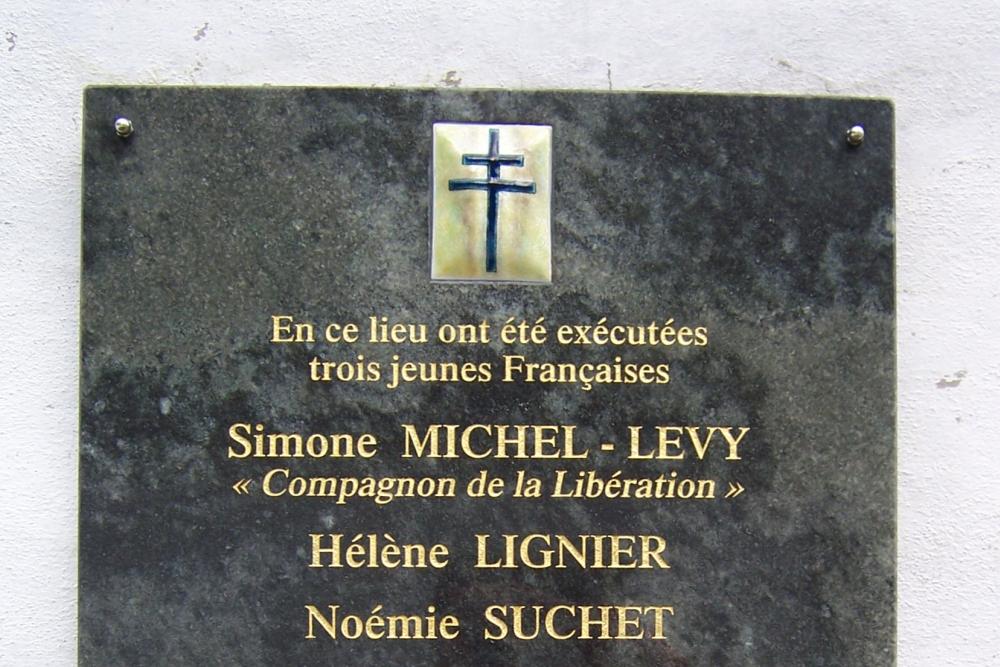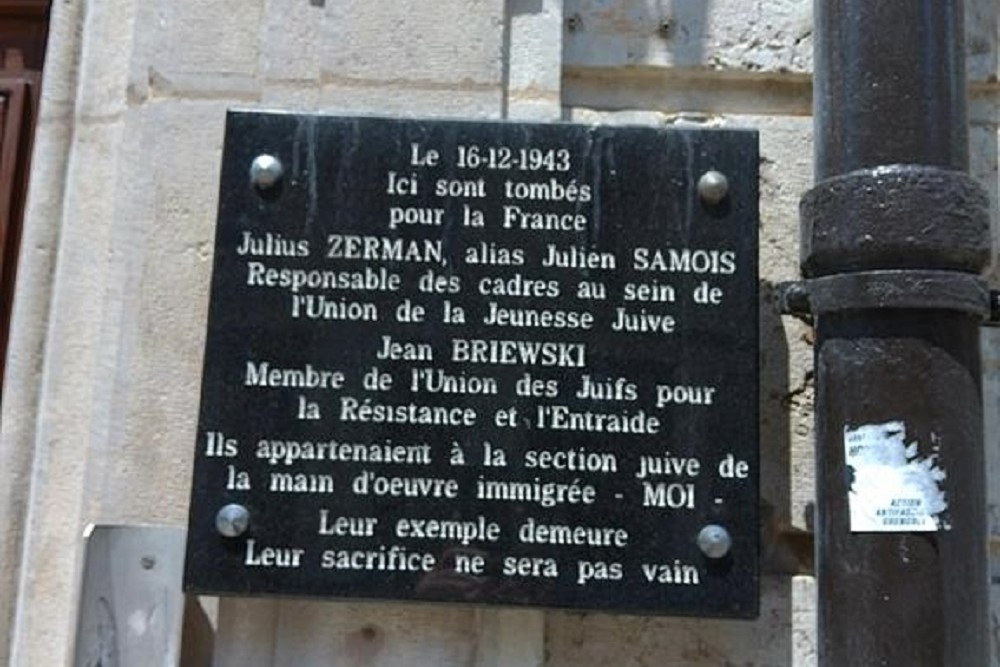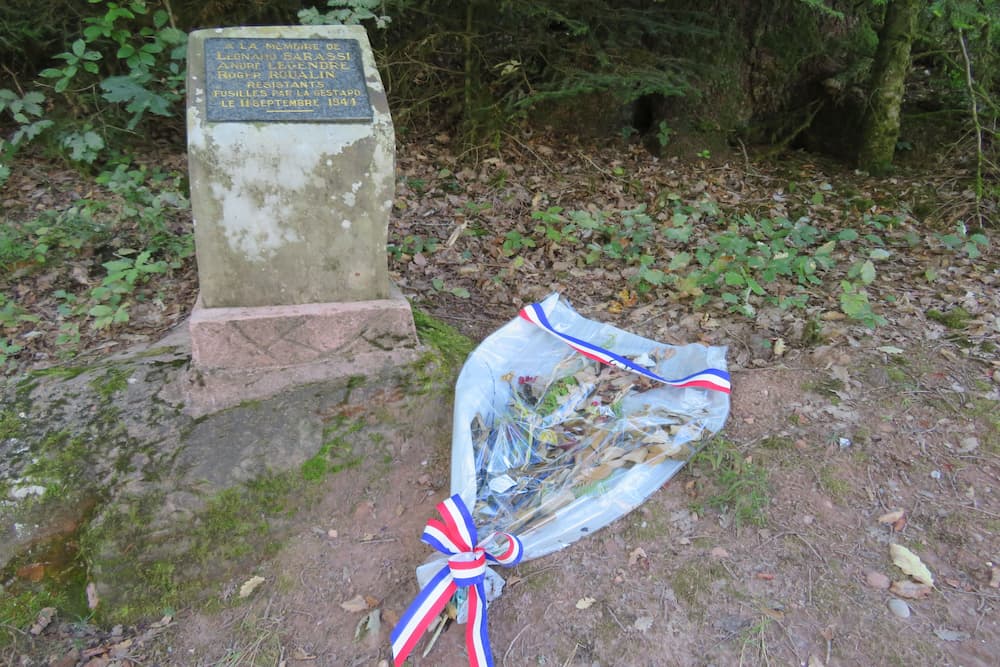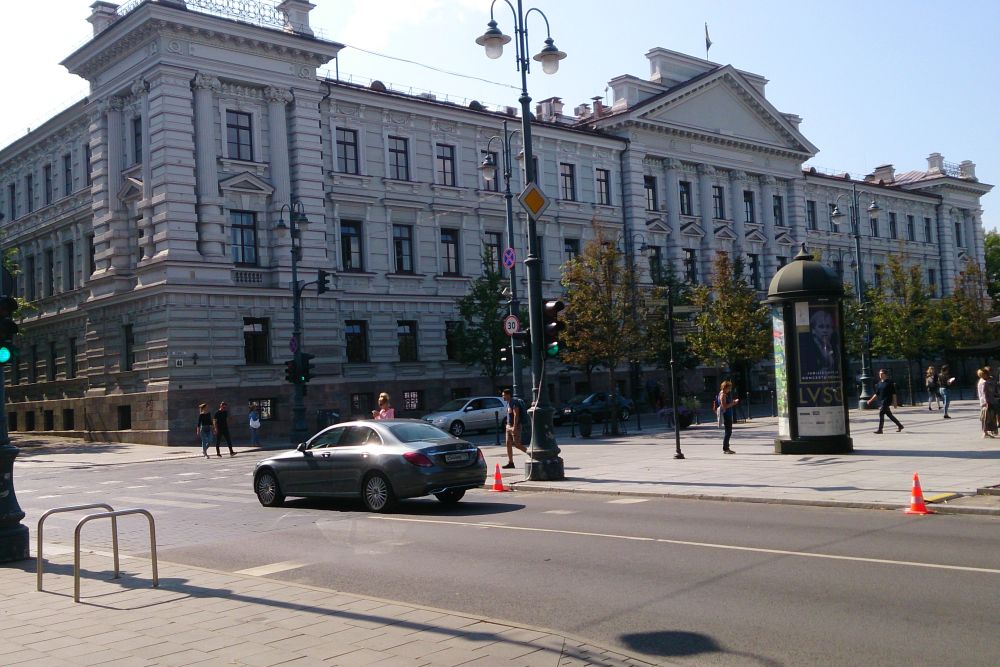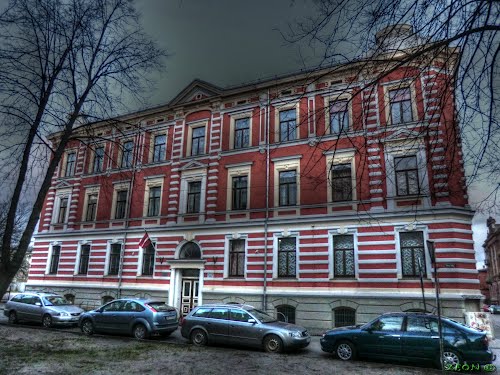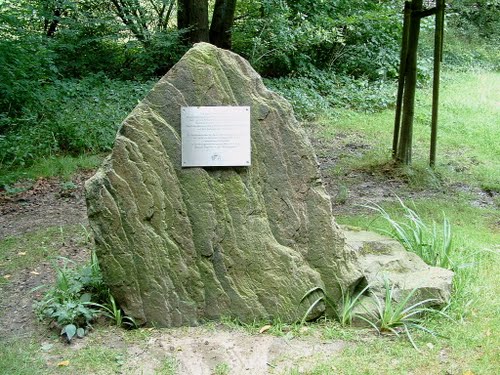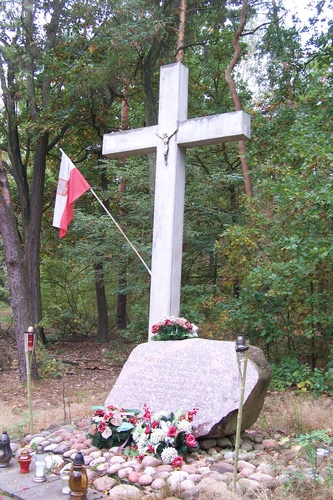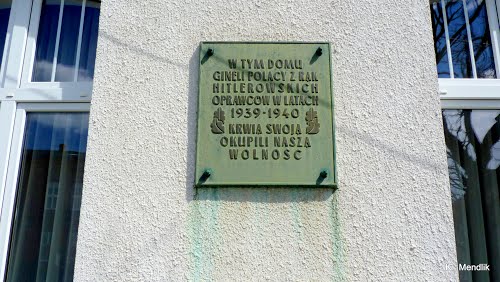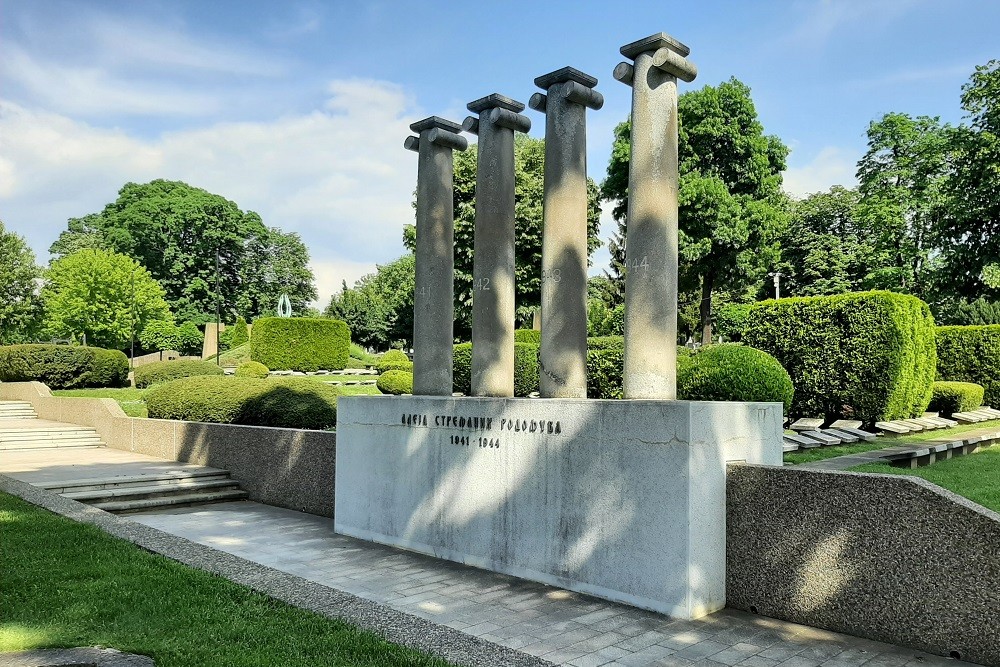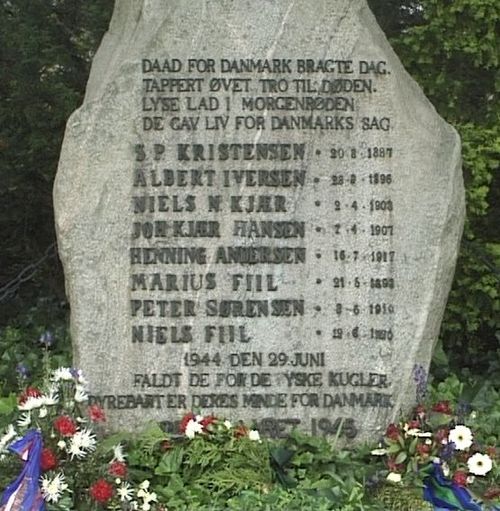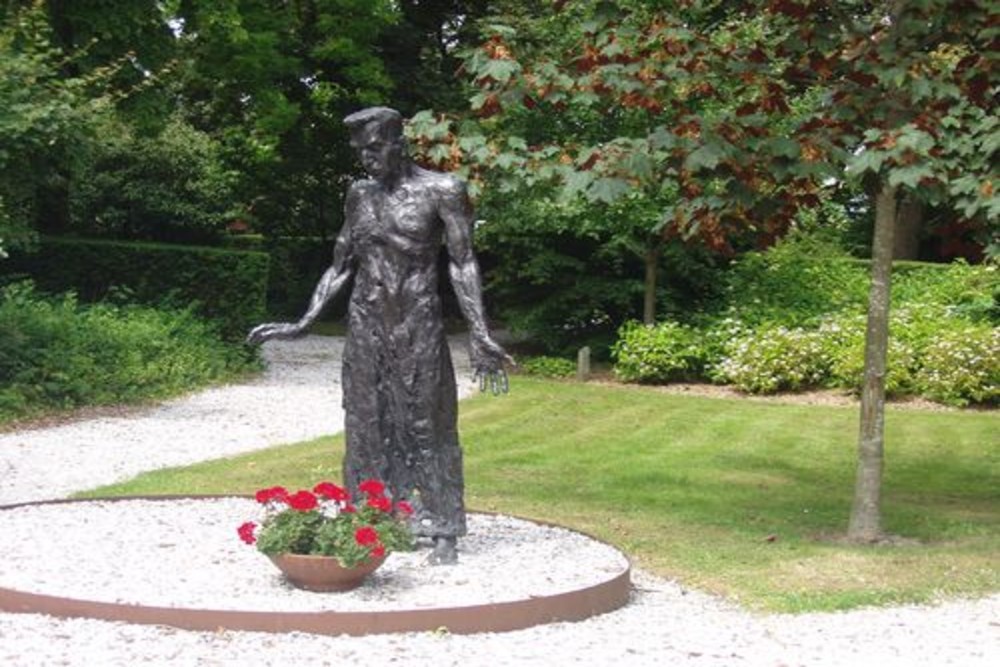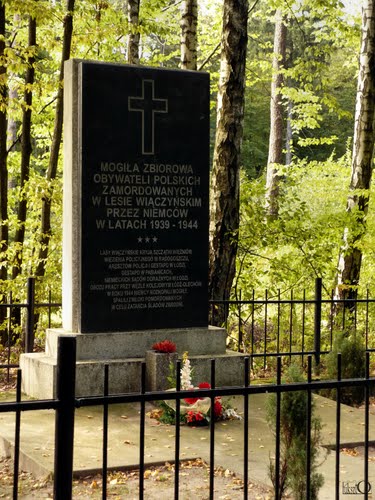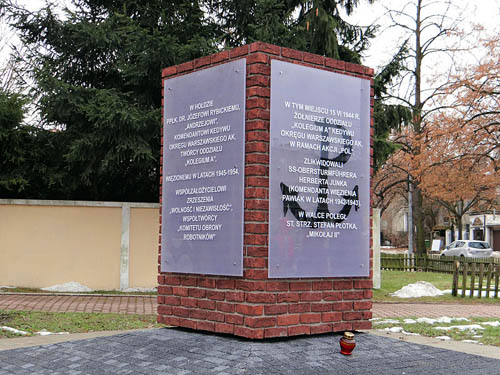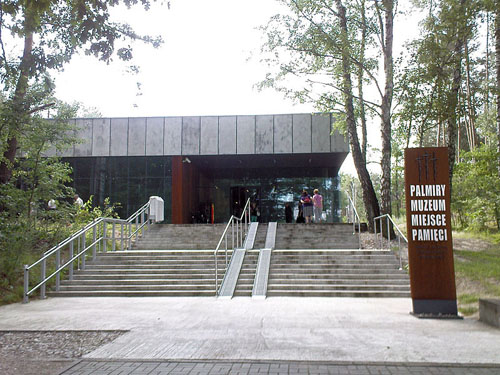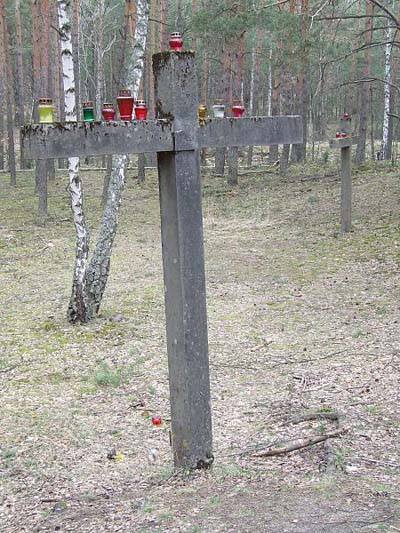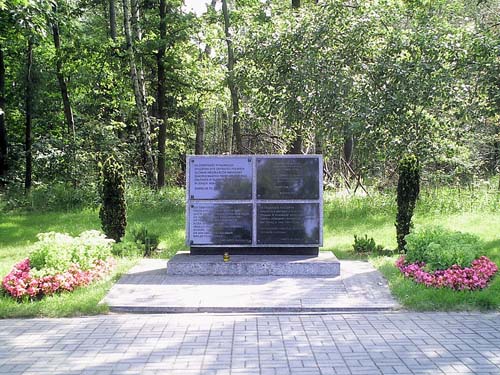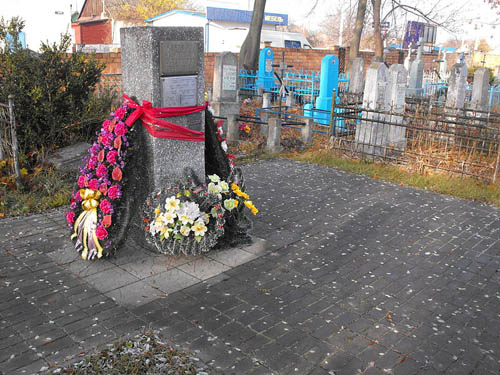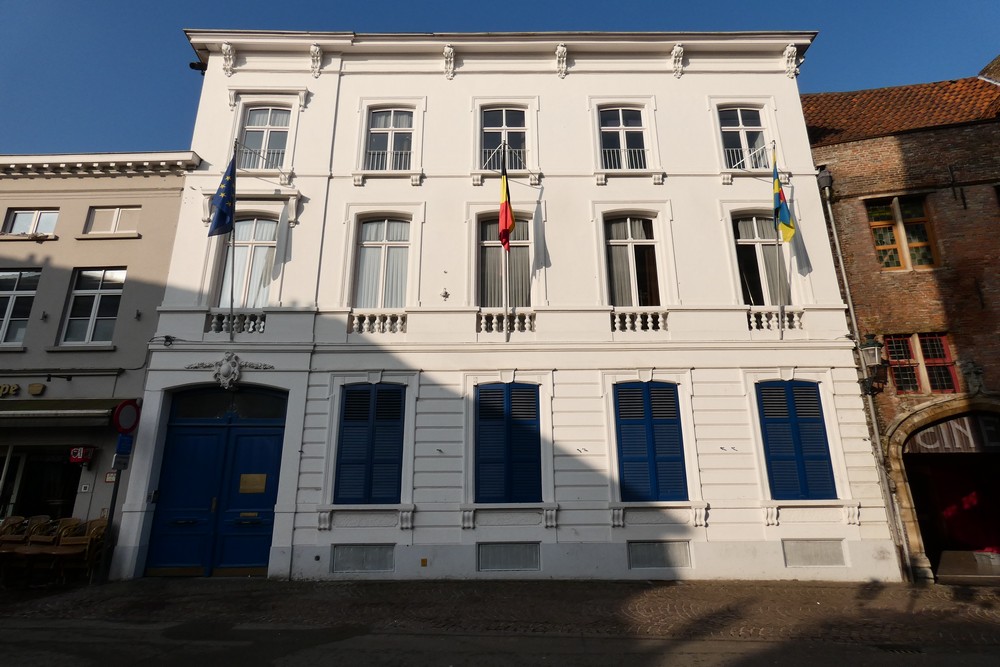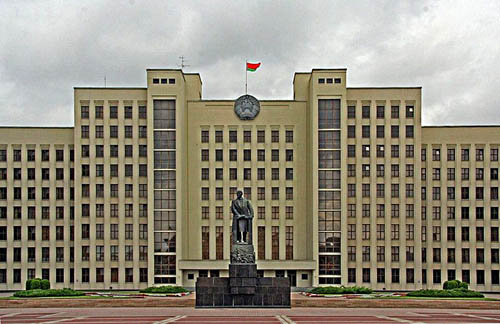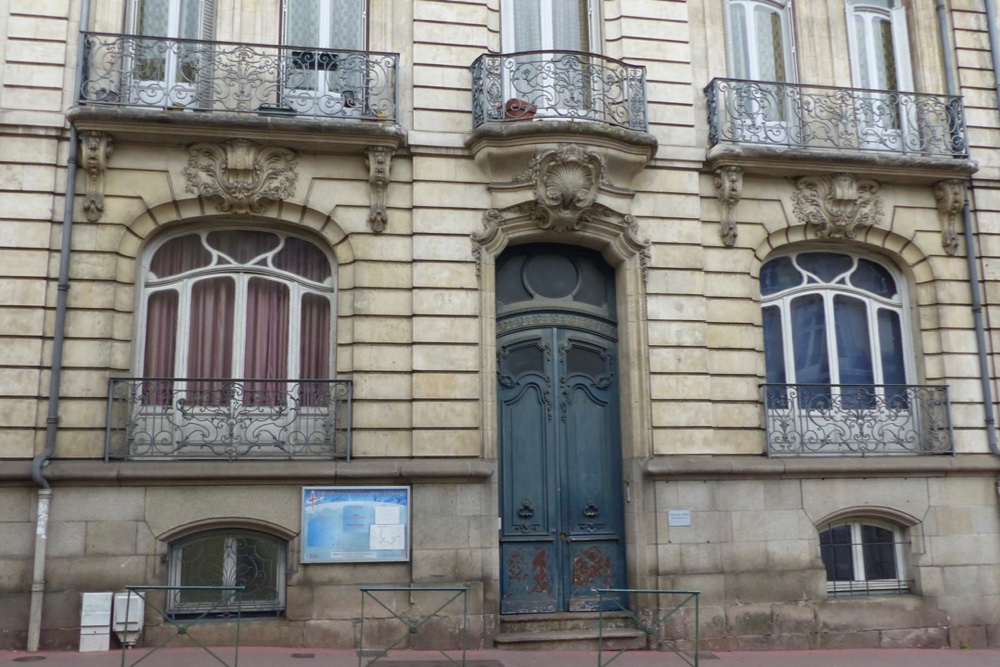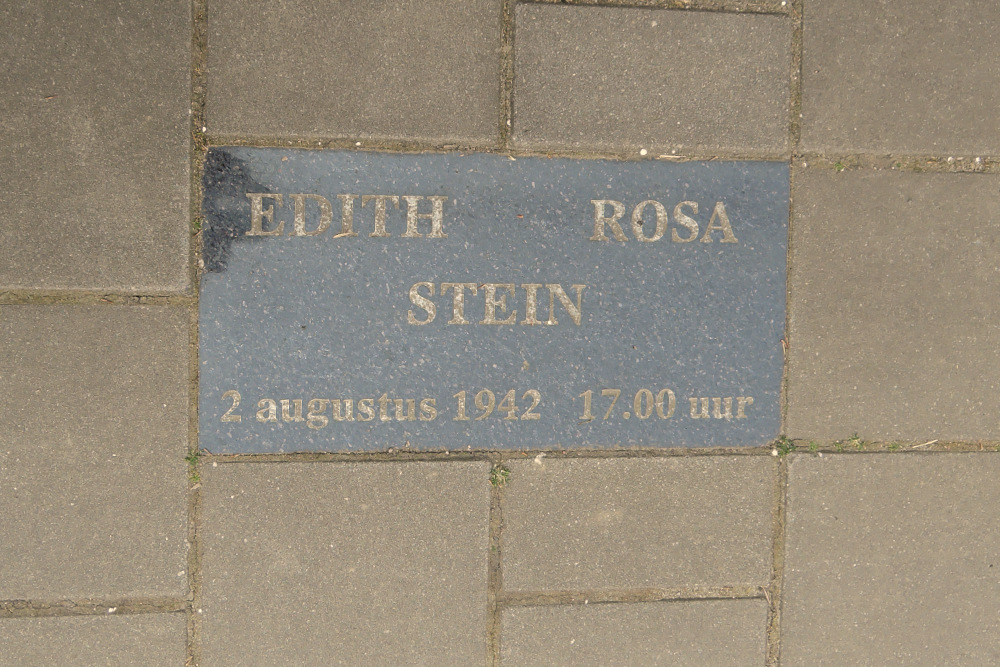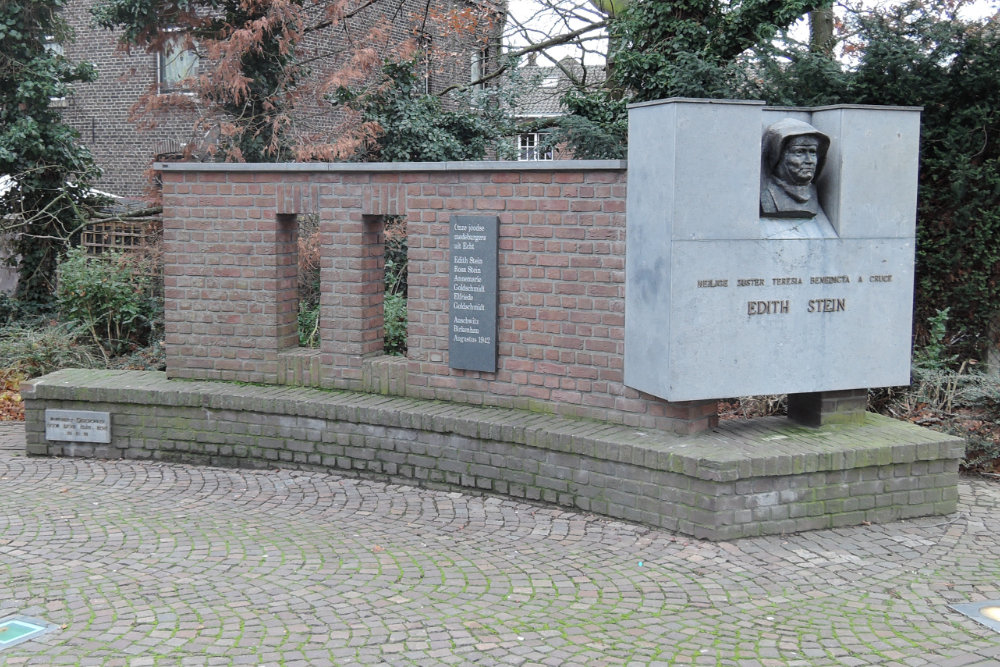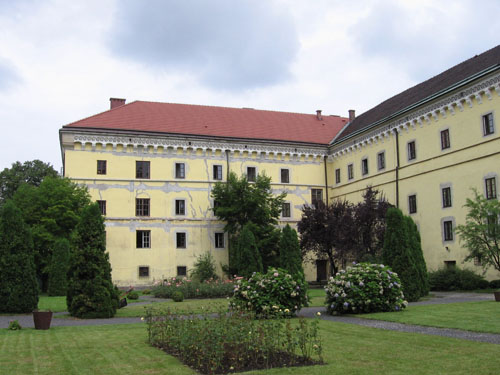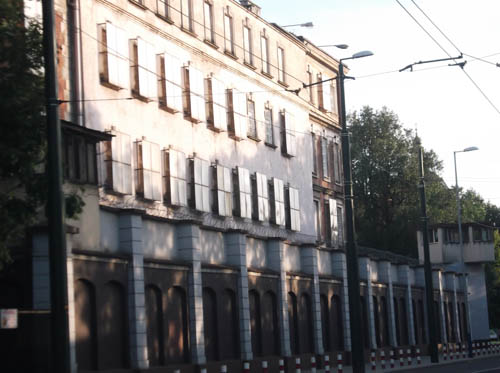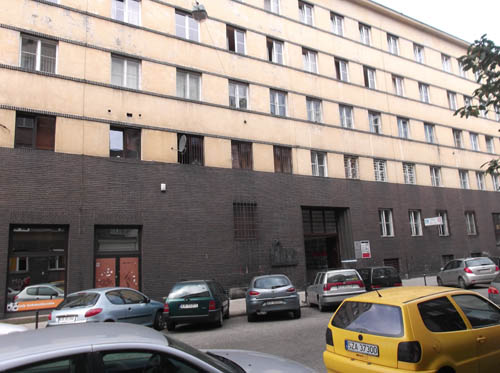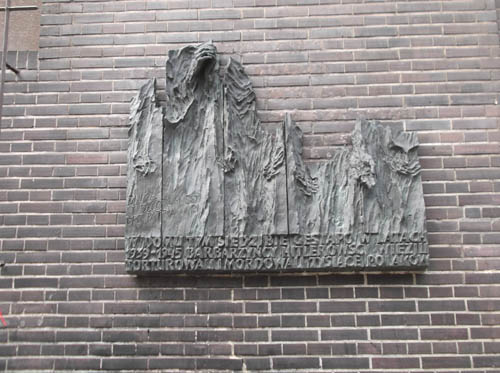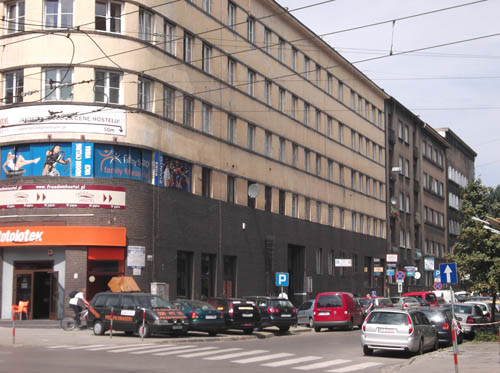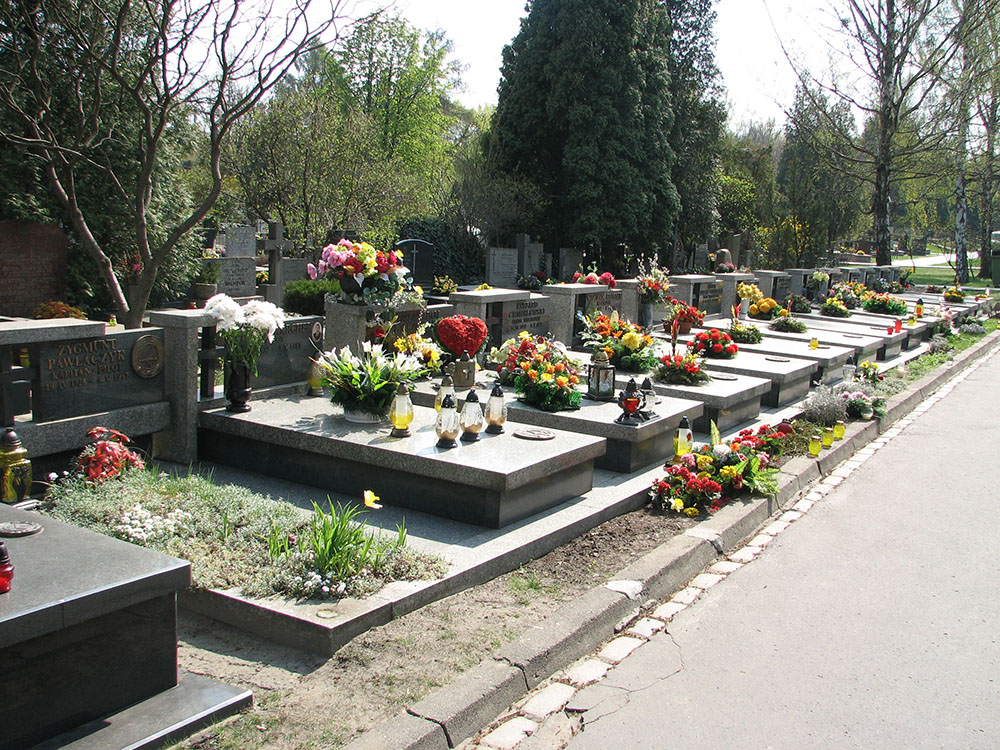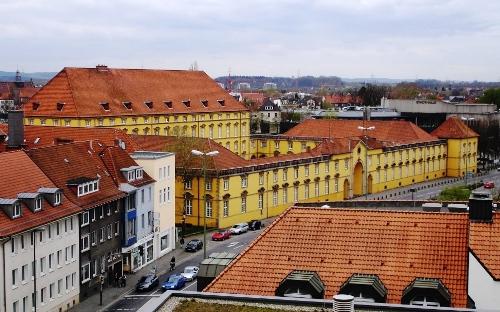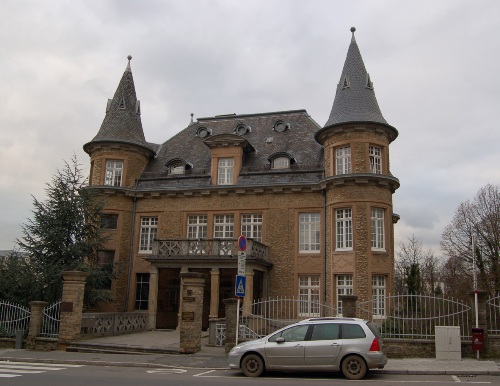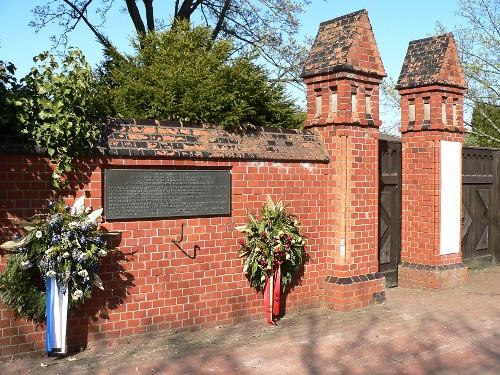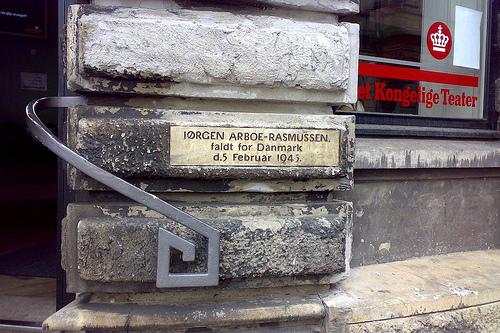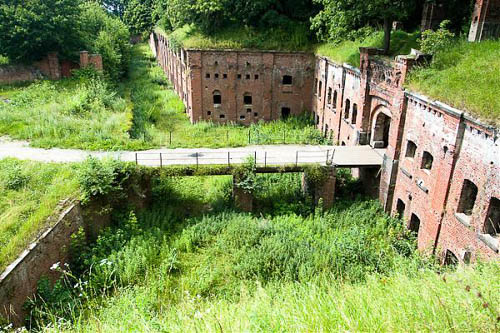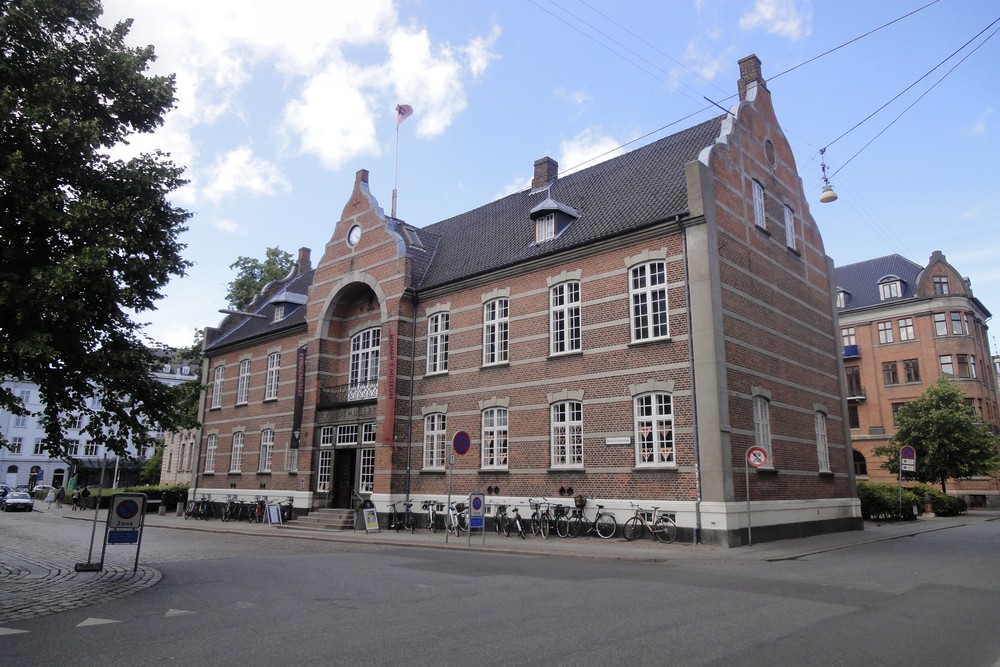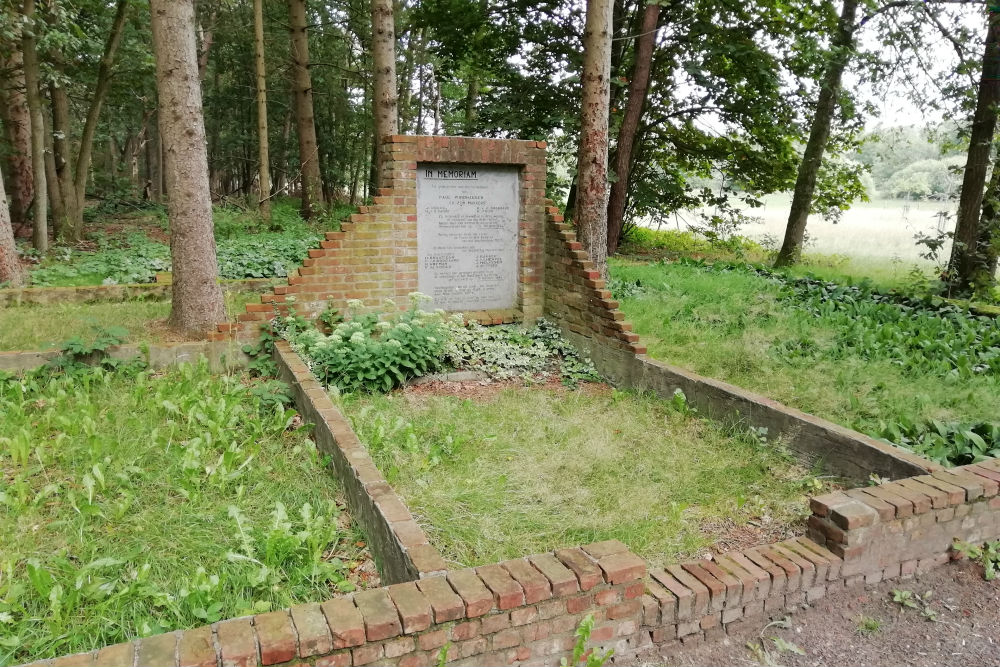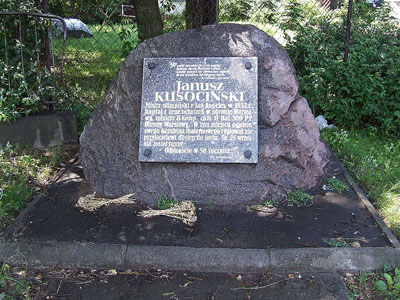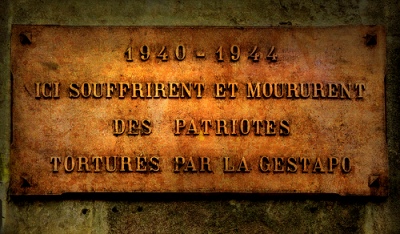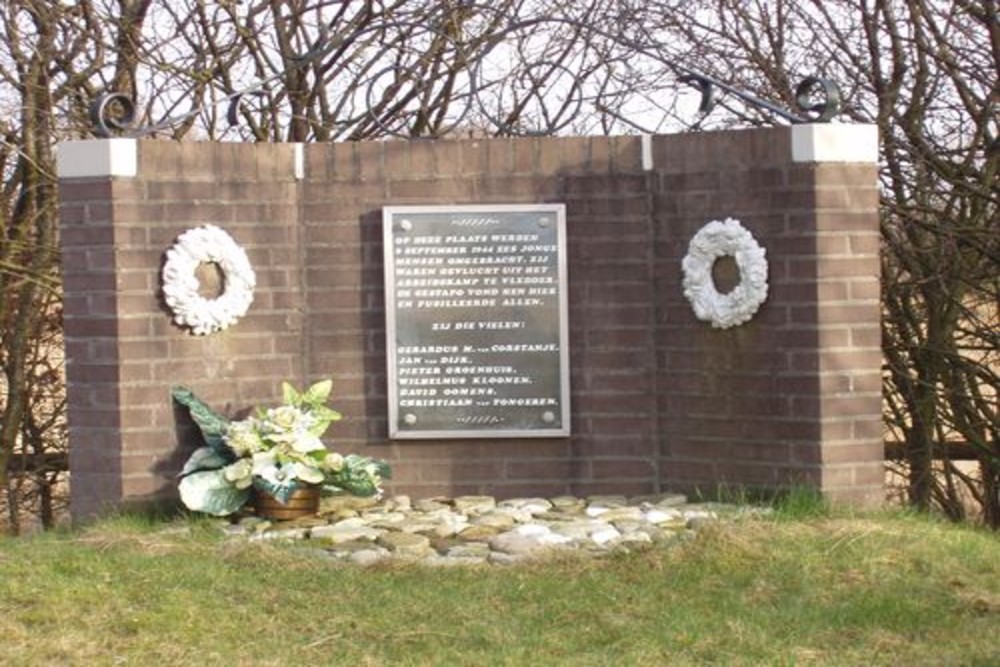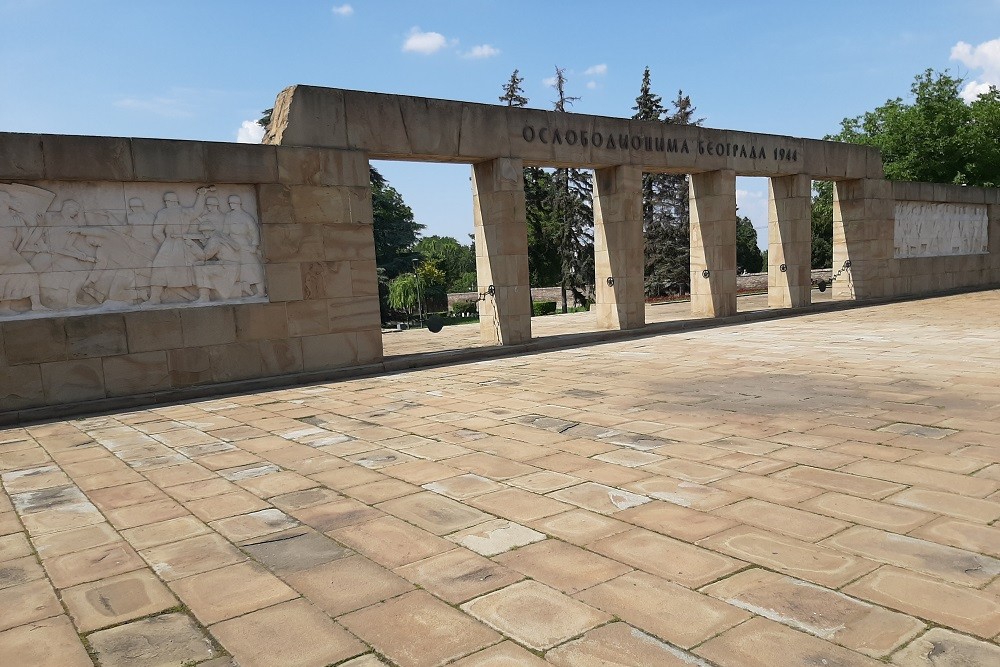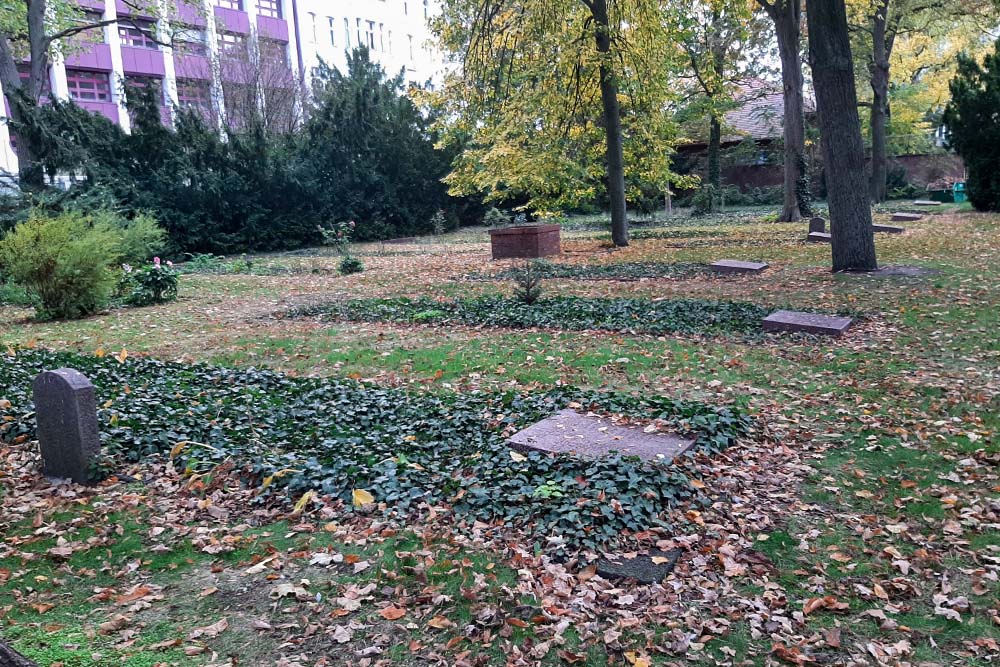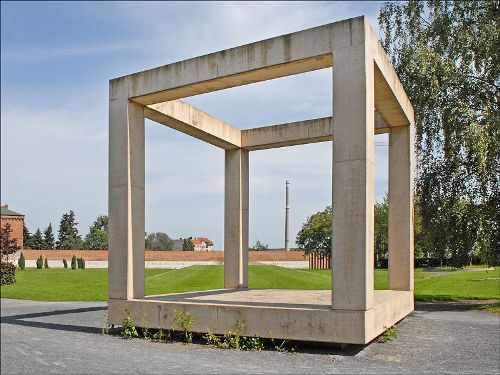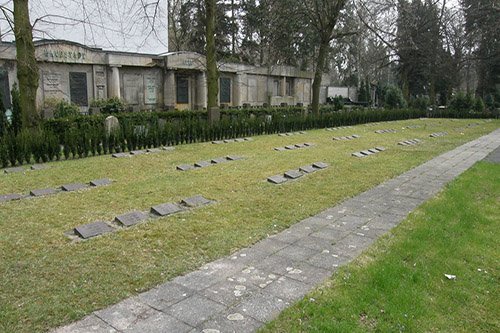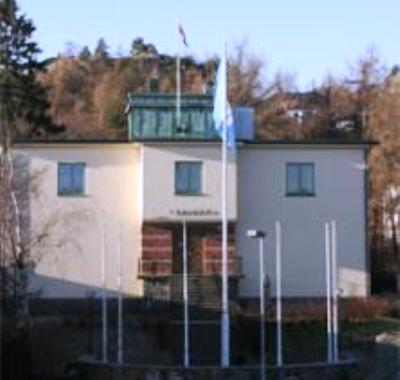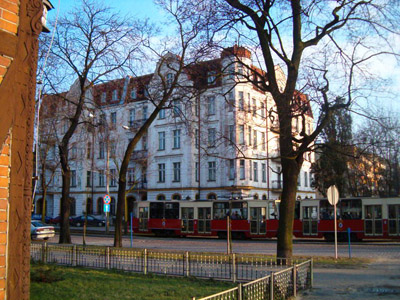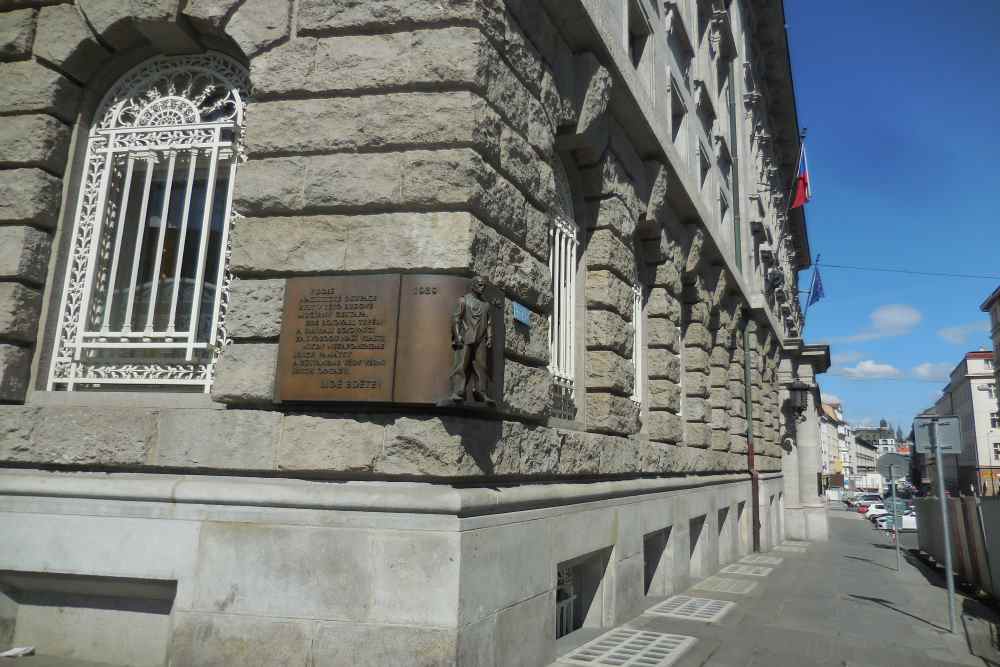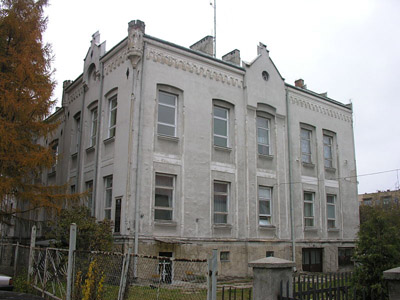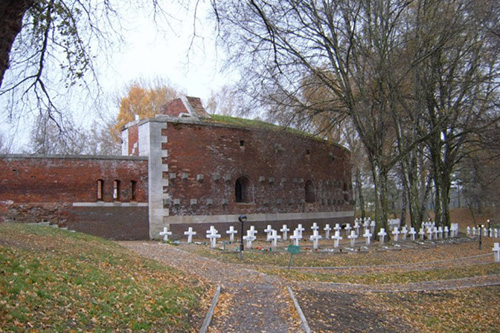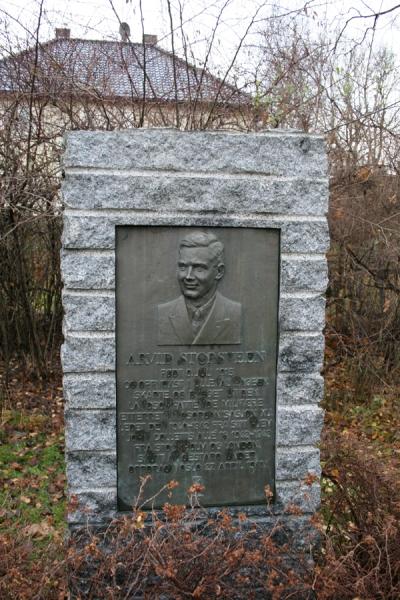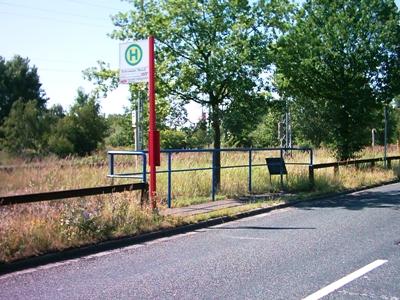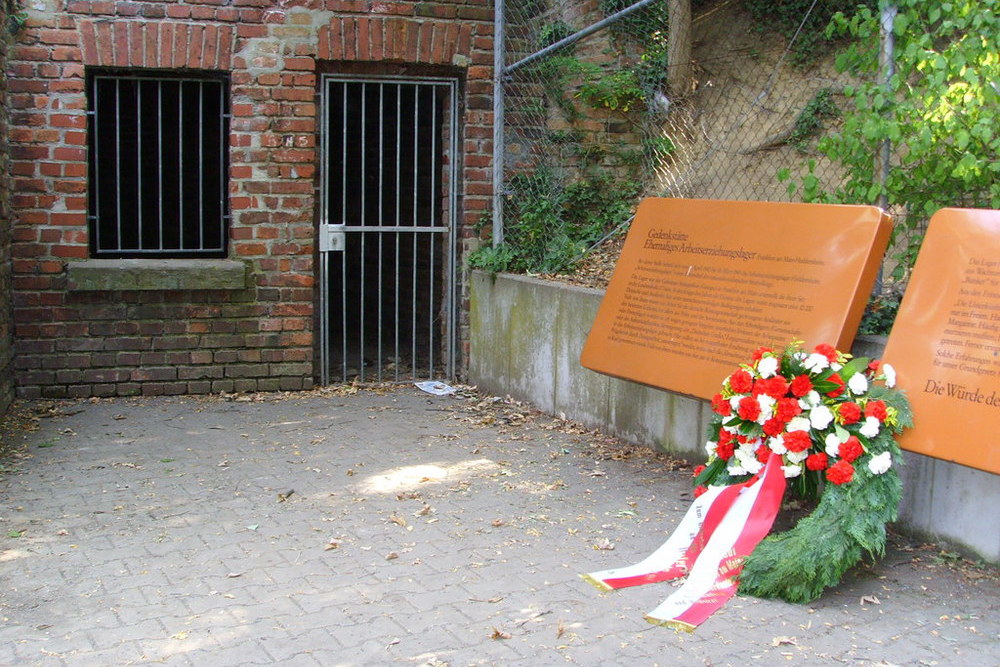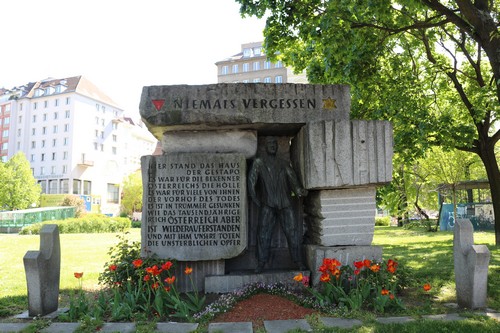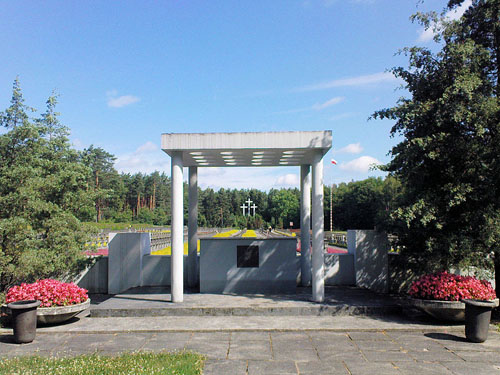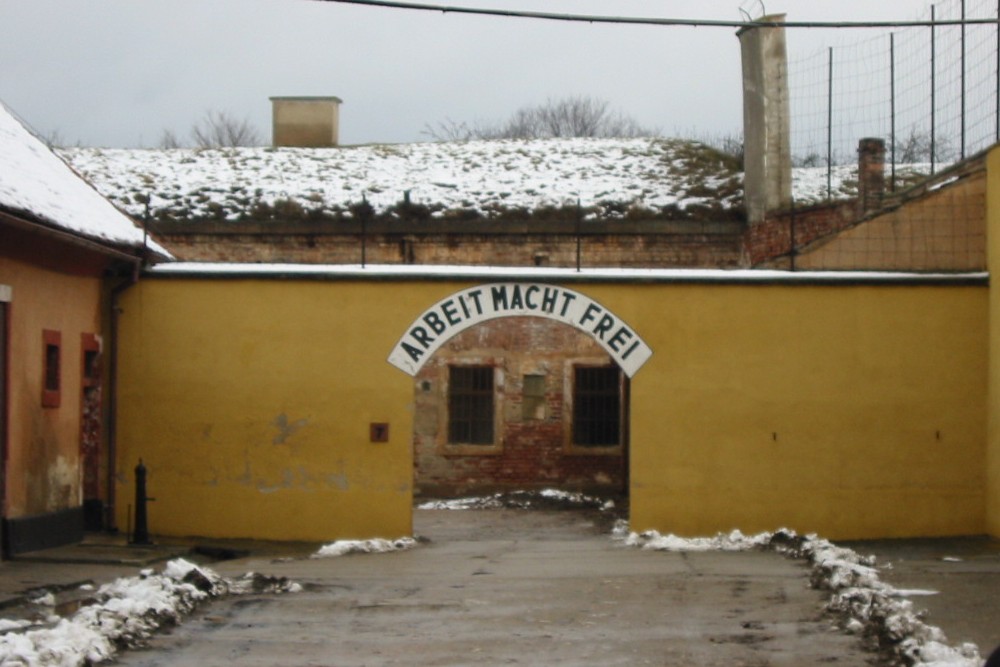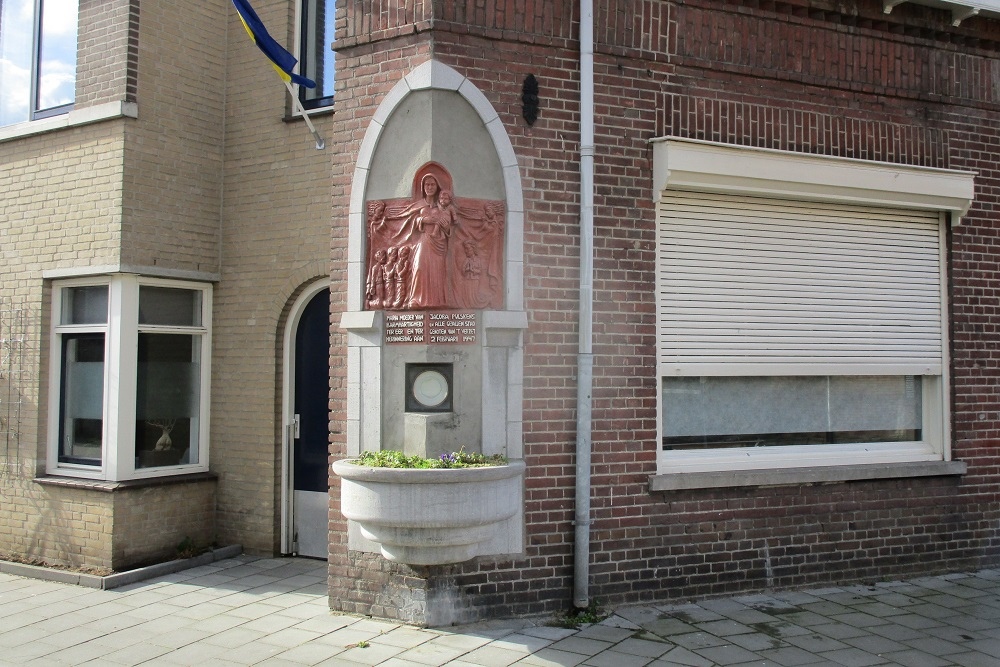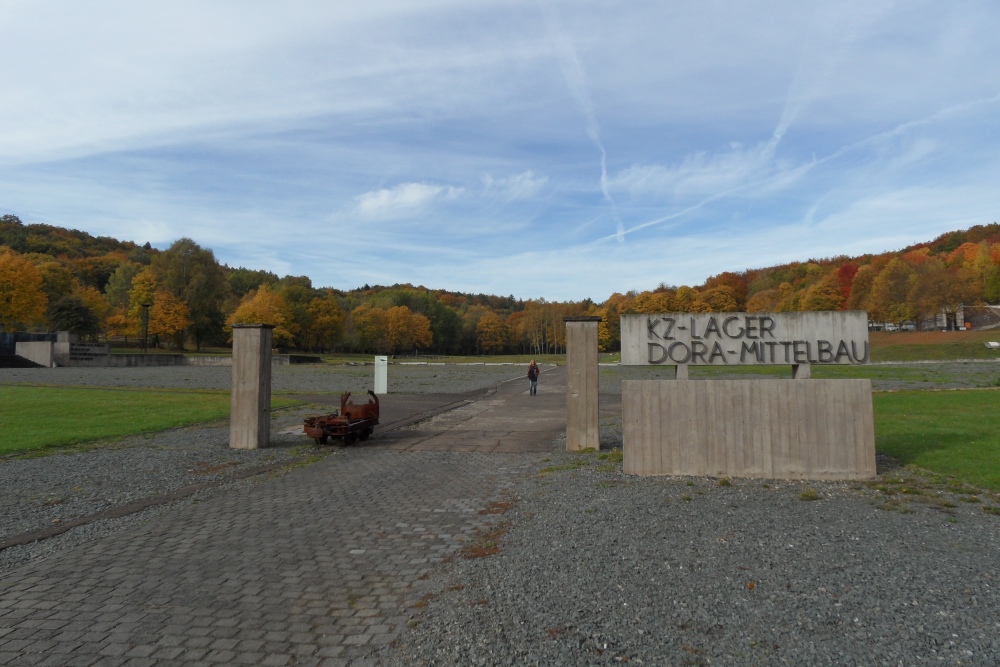Introduction
One of the organization most closely associated with Nazi terror is undoubtedly the Geheime Staatspolizei - secret state police - or in short Gestapo. From 1933 until the end of the war, the Gestapo was synonymous with terror, torture and murder and even after the war, memories of the Gestapo still cause great fear among many. The Gestapo grew into a true myth and an idea that even in our time enjoys enormous familiarity. Today, police forces that do not respect human rights are still labeled Gestapo-like organizations.
This article describes the origin and the history of the Gestapo from 1933 to 1945 and the enormous impact the organization had on daily life in the Third Reich. In addition, an attempt will be made to explain the myth of the Gestapo, evaluating the way in which the Gestapo could evolve into the police organization which possessed such widespread and feared power. Just how far did this power reach and how or by whom was this made possible.
Definitielijst
- Gestapo
- “Geheime Staatspolizei”. Secret state police, the secret police in the Third Reich.
- Nazi
- Abbreviation of a national socialist.
Origin
The Gestapo under Göring
Contrary to the origin of National socialist organizations such as the Sturmabteiling (SA) or the Schutzstaffel SS, the Gestapo was established at the moment Adolf Hitler took power in 1933. He became Reichskanzler on January 30, 1933, partly thanks to the continuous lobbying of fellow party member Hermann Göring. Apart from Hitler and Joseph Goebbels, (future Reichspropagandaminister) he was the prominent figure of the political party of the Nazis, the NSDAP. A successful fighter pilot from World War One and wearer of the Pour le Mérite, the highest award for achievements in wartime, he was widely praised as a real hero by the German population. In addition and contrary to his rival Goebbels, he rubbed elbows with the richer German upper class and mingled in domestic and foreign diplomatic circles. He played an important role in Hitler’s rise to power and throughout Hitler’s reign, he exerted a large influence on Nazi Germany.
One of the most important elements in Göring’s life was his lust for power and prominent functions within the Third Reich. During Hitler’s reign, Göring made it a habit to hold as many official functions as possible. He got his first official function even before the NSDAP took power: on August 30, 1932 he was elected chairman of the Reichstag. When the NSDAP took power in 1933, he soon collected functions. On January 30 Hitler appointed him Reichsminister ohne Portefeuille and on February 2 Reichsluftfahrtkommissar. He rose above both functions on May 5, 1933 because on this day he was appointed Reichsluftfahrtminister, a function he would hold until April 23, 1945. Apart from his functions in the national government, Göring held official functions in the state of Prussia as well. He started here on January 30, 1933 as Minister of the Interior and on April 11, he succeeded Franz van Papen as president of this state. Under Göring’s rule, the history of the Gestapo begins.
Gleichschaltung
As Prussian Innenminister, Göring immediately set about applying measures aimed at consolidating the power of Nazism and securing his own position. Just like in the rest of Germany, these measures were aimed at Gleichschaltung of the administrative system. This Gleichschaltung or equalization entailed adapting the entire social life to Nazi standards meaning many officials were ousted because they didn't sympathize with Nazism or Hitler. Within his ministry, dominated by members of the Sozialdemokratische Partei Deutschlands (SPD), Göring replaced anyone with leftist of anti-Nazi leanings with Nazi sympathizers. Being the highest official within the Prussian police he also introduced reforms within the police organization by replacing 22 out of the 32 chiefs of police with people recruited from the SA and the SS. In order to support the police, he also established an auxiliary police corps, consisting mainly of people from the SA and the SS. The major step in the future of the Third Reich however was taken within the Prussian political police. This secret police force was headed by Rudolph Diels.
Rudolph Diels
Rudolph Diels was employed in the Prussian Innenministerium since 1930. He was an anti-Communist but no Nazi; he joined the NSDAP as late as 1937. The only tie he had with Nazism was his supporting membership of the SA. In 1932 he went to work for the Prussian political police (Abteilung 1A) and at the time Hitler came to power he had risen to its chief. Before the Nazis came to power, the work within Diels’ political police entailed monitoring radical political movements. Hence, Diels busied himself with investigating political parties among other things, but his archives also contained many files about the Nazi party and its bigwigs. When in January 1933, Göring started his work as Prussian Innenminister, he became interested in the files of those bigwigs, including his own. Göring was impressed by Diels’ work and when the former founded the Geheime Staatspolizei on April 26, 1933, he appointed Diels head of this department which became known as the Gestapo. Under Göring’s leadership, an important step was taken towards the development of the Nazi police apparatus.
Protective custody
Under Rudolph Diels’ operational direction, the Gestapo was developed into a political police, acting independently from the uniformed police. The major responsibility of the Gestapo was consolidation of the national regime by arresting elements hostile to the state, for instance those who committed sabotage or undertook other criminal activities against the Nazi government. In addition, political dissidents such as Socialists and Communists were also picked up by the Gestapo. Many of those arrested ended up in the first concentration camps, established on Göring’s orders. Jews, Gypsies, Jehova Witnesses, homosexuals and other minorities were not yet the Gestapo’s principal victims in those early days. Persecution of people based on their race, religion or orientation only materialized in a later stage.
As citizens couldn't be arrested without a judicial base and detainees could sue the government if their penalty was unjustified according to the law, legislation in Nazi-Germany was altered drastically. The direct case of this change was the fire of the Reichstag of February 27, 1933. The Communists were blamed for this arson and in order to protect Germany against a Communist revolt, a state of emergency was declared and so the law could be adapted.
It was the so-called Schutzhaft that made it possible that any citizen in Germany, suspected of certain crimes, could be arrested and imprisoned without a court order, charge or trial. Schutzhaft meant that citizens were placed in protective custody, in other words they were protected by the government against the anger of the population and the government was protected against them. The detainee was to sign his or her own Schutzhaftbefehl. In it, the detainee himself stated he wanted to be arrested. In many cases, their signature was enforced by torture; Gestapo agents in particular were masters in torturing their detainees. The term Schutzhaft therefore was a euphemism and the authority to place people in prison or concentration camps without any form of trial was abused by the Nazis on a large scale. From the moment Hitler took power, not a single potential detainee or opponent of the Nazis was protected by law any longer.
Thanks to the amendment of legislation and the abuse of protective custody, the Gestapo had developed into an organization that was informally no longer bound by law and its agents were answerable only to their superiors and to Hermann Göring. Göring bathed in his power and eagerly wanted to keep his grip on the Gestapo but the Reichsinnenminister, Wilhelm Frick, preferred the power over the Gestapo to be coordinated centrally.,
Power struggle between Göring and Frick
Just like Göring, Wilhelm Frick was involved in the Nazi Party for a long time. He had participated in the Bierkellerputsch of November 9, 1923 but because of his ties to the Nazi Party he lost his job as chief of the Kriminalpolizei in Munich. When Hitler came to power, Frick was appointed Reichsinnenminster. In this capacity he was responsible for the German police for instance.
Frick wanted to centralize the leadership of the police by merging the various police corps in the 16 states, including the largest one, Prussia. Being the Prussian Minister of the Interior, Göring still had authority over the Prussian police but he had no objection as to the centralization of the leadership. He even wanted to cooperate in this. The reason Göring had no objection to this, which actually meant a limitation of his authority, was that he fostered hope to be selected the national leader of the police. This would have been a fine addition to the various prominent functions he already held. Whereas the Prussian police might well come under central leadership, he never thought of transferring authority over the Gestapo to someone else. Frick however didn't intend to appoint Göring national leader of the police and in addition, he wanted to incorporate not only the regular police but the political police as well in his ministry. To prevent Frick from getting his hands on the Gestapo, Göring converted the secret police to a separate organization, only answerable to the Prussian Innenminister, meaning himself. Göring might well have lost power over the Prussian police, the Gestapo remained his showpiece. Soon however, a person emerged who was more than willing to take charge of the corps. This person had been drawn into the Gestapo by Göring himself.
Definitielijst
- Abteilung
- Usually part of a Regiment and consisting of several companies. The smallest unit that could operate independently and maintain itself. In theory an Abteilung comprised 500-1,000 men.
- Gestapo
- “Geheime Staatspolizei”. Secret state police, the secret police in the Third Reich.
- Gleichschaltung
- “Standardisation”, “equalisation”. Aim of the NSDAP to model all social and cultural organisations to the national socialist ideal. Nobility and other traditional structures were targeted, as were other pluralist phenomena.
- Jews
- Middle Eastern people with own religion that lived in Palestine. They distinguished themselves by their strong monotheism and the strict observance of the Law and tradition. During World War 2 the Jewish people were ruthlessly persecuted and annihilated by the German Nazis. . An estimated 6,000,000 Jews were exterminated.
- Nazi
- Abbreviation of a national socialist.
- Nazism
- Abbreviation of national socialism.
- NSDAP
- Nazi Party, byname of National Socialist German Workers' Party, German Nationalsozialistische Deutsche Arbeiterpartei (NSDAP), political party of the mass movement known as National Socialism. Under the leadership of Adolf Hitler , the party came to power in Germany in 1933 and governed by totalitarian methods until 1945.
Heinrich Himmler
In February 1933, Göring had established the so-called Hilfspolizei (auxiliary police) to support both the police and the Gestapo. The unit was made up of members of the SS, SA and Stahlhelm the paramilitary Nazi union of front soldiers. Shortly after the establishment of this auxiliary police however, Göring decided to recruit the men from the SS. Meanwhile Stahlhelm had merged with the SA and the power of the latter increased steadily. Göring and other prominent Nazis were afraid that the SA and its leader, Ernst Röhm would ultimately gain too much influence within Nazi Germany and it goes without saying they wanted to prevent this. Recruiting members of the Hilfspolizei from the SS was emulated in all German states and in this way, the SS and its leader, Heinrich Himmler gained increasingly more influence.
The SS was established in 1925 as the body guard of Adolf Hitler and other prominent Nazis. On January 6, 1929, Heinrich Himmler was appointed Reichsführer-SS He was involved in the NSDAP since 1923 and he also had participated in the putsch of 1923. Until his appointment to Reichsführer-SS he had held some minor administrative functions within the party. The appointment was an important step in his career and under his leadership, the SS evolved into a colossal organization. At its establishment in 1925, the unit consisted of just 280 men, in 1929 this number had risen to some 52,000 and one year later to no less than 209,000. The SS was assigned a growing number of police and security tasks and played an important role in the persecution of minorities and opponents of the Nazis.
In the fall of 1933, Himmler was in command of the various political police units of the German states. Command of the Gestapo in Prussia and the enclaves Lippe and Schaumburg hadn't been offered to him yet. He meanwhile had some power over the Prussian Gestapo as Göring had appointed him Commissioner of Personnel of the auxiliary police. In 1934, the Gleichschaltung der Länder took place whereby the police forces of the various states, except Prussia, Lippe and Schaumburg, would be led centrally. Himmler was put in command of these units and it wouldn't take long before he had grabbed power over the Prussian regular and secret police.
Night of the long knives
This event occurred on June 30, 1934. The power mad Nazis, Göring and Himmler worked closely together to eliminate their growing rival Ernst Röhm and his SA forever. The power of the SA was rising and there were rumors and gossip that they were planning a coup. Göring and Himmler urged Hitler to eliminate the SA and warned him against the impending coup. Evidence of this Putch was based on rumors and part of the speculations were fabricated by the leader of the Sicherheitsdienst (SD) Reinhard Heydrich. Speculations or not, on June 27 Himmler and Heydrich were ordered by Hitler to liquidate members of the SA. The slaughter took place in the night of June 30 and early morning of July 1. The same day, Ernst Röhm was murdered in Stadelheim prison in Munich. An important rival of Göring and Himmler had been side tracked. The SS had risen in Hitler’s regard and he had offered Himmler all possibilities to further develop his organization into the police and security apparatus of the Third Reich. Tension between leaders of the SA and NSDAP had also caused Göring to appoint Himmler to Inspektor der Gestapo. Göring however remained the prime person responsible for it.
Himmler, Inspektor der Gestapo
When Himmler was appointed Inspektor der Gestapo on April 20,1934, the organization was still in chaos. Diels may well have converted the service into the most feared organization in Prussia but internally, the Gestapo was torn by intrigues. Göring recognized in Himmler the organizational gift that could restore order, discipline and authority within the Gestapo. Once Himmler had gained organizational power over the service, he had authority over the state police in all German states. Under Himmler, the service became a nationwide organization. From Gestapo HQ on 8 Prinz Albrechtstraße in Berlin, Himmler ordered to start a reorganization within the Gestapo, a process that would take several years.Reinhard Heydrich and the Sicherheitsdienst
Being Inspektor der Gestapo, Himmler appointed his closest associate Reinhard Heydrich to Chief of the Gestapo. Hence, operational leadership lay in the hands of Heydrich, administrative leadership was in the hands of Himmler and he in turn was subordinate to Göring. Since July 1932, Heydrich headed the Sicherheitsdienst (SD) the intelligence branch of the SS. Once Himmler had authority over all secret police departments in Germany, Heydrich, being chief of the SD and the Gestapo, was now a powerful man with a large influence on the German police and security apparatus. In the near future, Heydrich would also be given an extremely important role in the persecution and extermination of Jews and other minorities. The Gestapo and the SD had much in common and tasks and goals of both organizations overlapped each other in many details. Both organizations were aimed at tracking down political and racial enemies of the German Empire, including Jews. The SD was a Party organization whereas the Gestapo was a State organization but the main difference between the SD and the Gestapo was that the latter, contrary to the SD, was authorized to arrest and punish suspects. The SD busied itself with monitoring of and reporting on activities of political and racial enemies of the Reich and kept the Nazi leadership informed about the morale of the population. Whenever enemies had been unveiled, the Gestapo was tasked with arresting and punishing them. Hence, SD and Gestapo often handled the same cases, causing rivalry between the two. Various reorganizations, still to be implemented, wouldn't cause major changes in the division of tasks and responsibilities within the police and security systems of the Third Reich. The next organizational change occurred in 1936, the moment at which Himmler was appointed Chef der Deutschen Polizei. That was also the moment Göring lost his influence on the Gestapo.
The new ‘constitution’ of the Gestapo
Before Himmler took charge of the Gestapo from Göring, a basic law for the service was issued which had a huge influence on its freedom of action. On February 10, 1936, Reichsinnenminister Frick and Göring, Innenminister of Prussia, issued a law granting the Gestapo complete freedom of action to take measures in line with Nazism. Actually, this meant the service was no longer bound to any law. Nazi lawyer and deputy head of the Prussian police, described the authority of the Gestapo as follows: ‘As long as the Gestapo obeys the will of its leaders, its actions are legal’. The only subjects still prohibited by German penal law were murder and torture. For the Gestapo, it was no problem at all however, to falsify the cause of death of its victims.
Himmler, Chef der Deutschen Polizei
On June 17, 1936, all German police units were centralized and Himmler was appointed Chef der Deutschen Polizei. Being the leader of the SS and the German police, Himmler held an important position within the Nazi regime. The SS and the Gestapo were to work closer together and the Gestapo was assigned an important role within this system. On June 26, 1936, Himmler saw to it that there was a clear difference between the uniformed police and the secret police and criminal police. The classification of the various police services was as follows:
- Ordnungspolizei (ORPO)This was a collection of uniformed police corps that saw to the safety of citizens and the maintenance of law and order. Kurt Daluege was in charge of the ORPO and this was made up of for instance the Schutzpolizei (police in urban areas) and the Gendarmerie (police in rural areas)
- Sicherheitspolizei (SIPO) This was the part of the police that was usually ununiformed. It consisted of the Kriminalpolizei (KRIPO) and the Gestapo. Reinhard Heydrich was in charge of this branch of the police apparatus. Because Heydrich now had authority over the SD and the KRIPO, cooperation of the two grew steadily closer
Until 1939, the Gestapo consisted of the following branches:
- Amt I. This branch was tasked with overall organization of the Gestapo. In addition it was responsible for financial and legal affairs and was headed by Nazi lawyer Dr. Werner Best.
- Amt II. This branch was the most important of the Gestapo and was under Heydrich’s direct control. Operational leadership lay in the hands of the later Gestapo chief Heinrich ‘Gestapo’ Müller. This division had the most important task of the Gestapo: elimination of enemies of the Nazi regime.
- Amt III. This branch was tasked with counterespionage and was headed by Günther Palten. From November 1937 onwards, it trained special units for terrorization and Nazification of countries outside Germany.
On August 28, 1936, the Gestapo officially became a nationwide organization. Himmler issued an order, compelling all state police units in the various states to use the name Gestapo. On April 20, the Prussian Gestapo office in Berlin became the main office of the national Gestapo. With the Gestapo under command of the leader of the SS, Heinrich Himmler, Göring lost his authority over it. His power within the Third Reich was still immense though because in addition to the functions he already held, he had collected other prominent functions such as commander of the Luftwaffe and the responsibility for the Four-Year Plan.
Custody to prevent crimes
Apart from the law to place opponents of the Nazi regime in protective custody, in 1937 the Gestapo got a new legal tool that would make imprisoning opponents even easier. This law: ’Vorbeugende Verbrechensbekämpfung’ (loosely translated into custody to prevent crimes). Based on this law, the Gestapo got the opportunity to lock up potential criminals and enemies of the Third Reich in concentration camps without intervention of the courts. ‘The police has to be omnipresent in order to prevent, respectively quell any disturbance of public order, even if the law has not been openly violated - or not yet,’ the explanation of Nazi lawyer and Gestapo branch leader Dr. Werner Best reads.
The definition of criminals and enemies of the Third Reich became gradually broader. Whereas mainly political opponents of the NSDAP were picked up initially, later on, other ‘a-socials,’ (including vagrants, prostitutes, the jobless and beggars), Gypsies, homosexuals, Jehovah’s Witnesses, members of sects and mental patients were locked up in the concentration camps as well. Jews had also been incarcerated for some time but usually not for pure racial reasons. In November 1938, a certain event triggered the beginning of a massive manhunt of the Jewish population. Of course the Gestapo was one of the most important hunters.
Reichskristallnacht
In the night of November 9 to 10, 1938 and a large part of the morning a pogrom erupted all over Germany and Austria, initiated by Reichspropagandaminister Joseph Goebbels. It was in retaliation of the assassination of Ernst Rath, an employee of the German Embassy in Paris, by a young Jewish refugee, Herschell Grinspan. During a memorial of the Putsch of 1923, Goebbels called on his party members to take action against the Jewish population. This action was put in motion and orchestrated by the Gestapo and other police services, the SA, SD and the SS. Those services were not tasked with actually carrying out the pogrom but to mingle - in civilian garb - with the crowd to prevent looting. Synagogues and Jewish community centers could be set on fire but shops and warehouses were not to be plundered by a frenzied crowd or set on fire. The reason was: the German government wanted to confiscate the Jewish goods. At the end of the pogrom, uniformed police was tasked with sealing off and securing destroyed shops and apartment buildings.
The frenzied stormtroopers of the SA hadn't received the message well and they were under the impression they had been given a free hand so they acted accordingly. A wave of destruction erupted, carried out by the SA, fanatic followers of the NSDAP and common German citizens. During this staged pogrom, 7,500 shops, 29 warehouses and 171 houses were destroyed; 191 synagogues burned down completely and another 76 were severely damaged. Eleven Jewish community centers, death chapels and comparable buildings were set on fire and another 3 were looted. At least 30,000 Jewish males were arrested, partly by the Gestapo and locked up in concentration camps.
The Reichskristallnacht caused great unrest in other countries but this action was only the beginning. It was the start of the mass discrimination and persecution of the Jewish population by the Gestapo. The service became one of the most important executors of the persecution and from that moment on, it also targeted racial enemies of the Third Reich. The Gestapo developed further within a new umbrella organization within the SS that was established on September 27, 1939.
Definitielijst
- Gestapo
- “Geheime Staatspolizei”. Secret state police, the secret police in the Third Reich.
- Gleichschaltung
- “Standardisation”, “equalisation”. Aim of the NSDAP to model all social and cultural organisations to the national socialist ideal. Nobility and other traditional structures were targeted, as were other pluralist phenomena.
- Jews
- Middle Eastern people with own religion that lived in Palestine. They distinguished themselves by their strong monotheism and the strict observance of the Law and tradition. During World War 2 the Jewish people were ruthlessly persecuted and annihilated by the German Nazis. . An estimated 6,000,000 Jews were exterminated.
- KRIPO
- Kriminalpolizei. Criminal investigation agency. Ordinary civilian police of Nazi Germany.
- liquidate
- Annihilate, terminate, destroy.
- Luftwaffe
- German air force.
- Nazi
- Abbreviation of a national socialist.
- Nazism
- Abbreviation of national socialism.
- NSDAP
- Nazi Party, byname of National Socialist German Workers' Party, German Nationalsozialistische Deutsche Arbeiterpartei (NSDAP), political party of the mass movement known as National Socialism. Under the leadership of Adolf Hitler , the party came to power in Germany in 1933 and governed by totalitarian methods until 1945.
- putsch
- Coup, often involving the use of violence.
- SIPO
- ”Sicherheitspolizei”. Combination (since 1936) of the Gestapo and criminal police.
The Reichssicherheitshauptamt
On September 27, 1939, the forces of the Sicherheitspolizei and the Sicherheitsdienst were merged into a central organization within the SS, the Reichssicherheitshauptamt. (Main office of state security) From 1939 to 1945, this RSHA was responsible for the security in Germany as well as in the occupied countries. The main task of the organization was the persecution of political, ideological and racial enemies of the Nazis. Between September 1, 1939 and May 27, 1942, the RSHA was headed by Reinhard Heydrich. When he succumbed to his injuries after an attack on his life, Himmler took over his function temporarily. From January 1, 1943 to May 8, 1945, Ernst Kaltenbrunner was in charge.
The organization consisted of 7 departments, the Gestapo being one of them:
- AMT I – Personnel
- AMT II – Organization, administration and justice
- AMT III – Domestic intelligence service (SD)
- AMT IV – Gestapo
- AMT V – Crime fighting Kriminalpolizei
- AMT VI – Foreign intelligence service (SD)
- AMT VII ‘Weltanschauung’ - Nazi Ideology and research
Amt IV, or the Gestapo consisted of 6 branches which were divided into several subbranches, resulting in an extremely complex organization:
Amt IV A: Communism, Marxism, Reaction
- A 1: Communism, Marxism and comparable organizations, war crimes, illegal and hostile propaganda
- A 2: Counter sabotage and fighting sabotage
- A 3: Reaction, opposition, legitimacy, liberalism, emigrants and fraud
- A 4: Security services, murder attempts, guarding, special tasks, tracing Amt IV B: Catholics, Protestants and Jews
- B 1: Catholicism
- B 2: Protestantism and sects
- B 3: Other Churches and Free Masonry
- B 4: Jewish and Evacuation affairs
- C 1: File index, ID administration, intelligence agencies and supervision of foreigners
- C 2: Cases involving Schutzhaft
- C 3: Cases pertaining to press and literature
- C 4: Cases pertaining to the Party and its organizations
- D 1: Affairs of the Protectorate, Czechs in the Reich
- D 2: Affairs of the Generalgouvernement, Poles in the Reich
- D 3: Foreigners hostile to the state
- D 4: Occupied territories: France, Luxemburg, Alsace, Lorraine, Belgium, the Netherlands, Norway and Denmark
- E 1: General affairs of counterespionage
- E 2: Economic and counterespionage
- E 3: Abwehr West
- E 4: Abwehr Nord
- E 5: Abwehr Ost
- E 6: Abwehr Süd
Amt IV C: Schutzhaft
Amt IV D: Protectorate, Generalgouvernement, Occupied territory
Amt IV E: Counterespionage
Amt IV F: Grenzpolizei
Heinrich ‘Gestapo’ Müller
Heydrich was chief of the secret police until the Gestapo was incorporated in the RSHA. When Heydrich was appointed its chief, the function of chief of the Gestapo was taken over by one of his trustees, Heinrich Müller. His police career started in 1919 at police HQ in Munich. Shortly after Heydrich became chief of the Bavarian police, Müller became one of his most important assistants. Himmler noticed his achievements and appointed him to chief of the Kriminalpolizei.
When Heydrich was appointed chief of the Gestapo, he took Müller with him and appointed him chef of Amt II This branch busied itself with the most important task of the Gestapo: eliminating opponents of the Nazi regime. In his capacity of chief of this branch, Müller was heavily involved in the Reichskristallnacht. It was Müller who had to direct the entire pogrom from within the Gestapo. Based on his achievements within the police apparatus, Müller became chef of Amt IV of the RSHA. His great influence on the service earned him the nick name "Gestapo Müller’. During his tenure as Gestapo chief, his organization played a major role in the persecution of the Jews and the subsequent Endlösung. These two operations were carried out by Amt 4 B 4 which was headed by Adolf Eichmann, one of the main organizers of the Holocaust.
Definitielijst
- Abwehr
- Term used for the German military intelligence unit during the WW1 and WW2. From 1935 onwards under command of Admiral Wilhelm Canaris. The organisation often came into conflict with other secret services such as the SD and the Gestapo. During World War 2 under Canaris frequently a source for conspiracies against the Nazi regime until in 1943 a major conspiracy by a number of prominent members of the Abwehr was discovered and the Abwehr was placed under command of Himmler. After the assassination attempt on Hitler in 1944, Canaris was discharged and the Abwehr was dissolved. The conspirators and Canaris were prosecuted and in 1945 they were executed atc oncentration camp Flossenburg.
- Communism
- Political ideology originating from the work of Karl Marx “Das Kapital” written in 1848 as a reaction to the so-called class struggle between the proletariat (labourers) and the bourgeoisie. According to Marx the proletariat would take over power from the well-to-do classes though a revolution. The communist movement aspires an ideal situation where the means of production and the means of consumption are common property of all citizens. This should end poverty and inequality (communis = common).
- Generalgouvernement
- That part of Polish territory occupied by the Germans in 1939. It was an autonomous part of Greater Germany. In August 1941 Eastern Galicia was added to the Generalgouvernement. It was governed solely by Germans under direction of Generalgouverneur Hans Frank. It was to become a full German province inhabited only by German colonists.
- Gestapo
- “Geheime Staatspolizei”. Secret state police, the secret police in the Third Reich.
- Holocaust
- Term for the destruction of European Jewry by the Nazis. Holokauston is the Greek term for a completely burnt sacrifice.
- Ideology
- A collection of principles and ideas of a certain system.
- Jews
- Middle Eastern people with own religion that lived in Palestine. They distinguished themselves by their strong monotheism and the strict observance of the Law and tradition. During World War 2 the Jewish people were ruthlessly persecuted and annihilated by the German Nazis. . An estimated 6,000,000 Jews were exterminated.
- Nazi
- Abbreviation of a national socialist.
- persecution of the Jews
- "Judenverfolgung", action imposed by the Nazis to make life hard for the Jews, to actively persecute them and even annihilate them.
- propaganda
- Often misleading information used to gain support among supporters or to gain support. Often used to accomplish ideas and political goals.
- RSHA
- Reichssicherheitshauptamt. The central information and security service of the Third Reich.
- war crimes
- Crimes committed in wartime. Often concerning crimes committed by soldiers against civilians.
- Weltanschauung
- This expression has often been used to refer to the "wide worldview" or "wide world perception" of a people, family, or person.
Involvement in the Holocaust
The Gestapo and the persecution of the Jews
Up until 1939, Jews were being discriminated and politically active Jews were locked up in concentration camps but there was no question yet of a massive persecution of the Jewish population. Reichskristallnacht triggered the massive persecution but at the moment Germany invaded Poland it began in earnest. This new phase, which began in September 1939, was characterized by a total dismantling of human and civil rights for Jews. This phase began during the German invasion of Poland and lasted until the German attack on the Soviet Union in June 1941. During this period, Jews were expelled from Germany by the thousands and deported to the Generalgouvernement (the part of Poland under German rule) where they had to live in ghettoes under miserable conditions. Their possessions were confiscated by the Germans. In the Generalgouvernement they were deployed as forced laborers and many died of starvation during this period. During this second phase, an increasing number of Jews would end up in concentration camps, mainly the well-to-do and the better educated. Since the establishment of the RSHA, the persecution of Jews was coordinated by the Jewish branch of the Gestapo. This branch, Amt IV B 4 was mainly responsible for the arrest and deportation of the Jews to Poland. Moreover, plans were made within this branch for a ‘definite solution of the Jewish problem.’
Throughout the existence of the RSHA, Adolf Eichmann headed this Jewish department of the Gestapo. He had been trained in concentration camp Dachau and was one of Theodor Eicke’s first pupils. In 1934, Eichmann went to work for the Sicherheitsdienst (SD) where he busied himself with gathering intelligence on the Free Masonry. In 1935 he became involved in the persecution of Jews when he was employed in the Jewish section of the SD led by Herbert Hagen. Prior to his appointment as chief of the Jewish branch of the Gestapo, Eichmann worked at organizing compulsory emigration of Jews. He established the Zentralstelle für Jüdische Auswanderung (Central Jewish emigration office). He also visited Palestine to see whether the Jews could emigrate to that country in their masses.
Due to his close involvement with the Jewish question, Eichmann was appointed head of the Jewish department within the Gestapo and the RSHA. In this capacity he bore more responsibility than other department heads and he frequently worked closely together with Heydrich or Himmler. Eichmann coordinated the compulsory deportation of Jews to the Generalgouvernement and thought about definite solutions to remove the Jewish population from Europe. One of his ideas was the so-called Madagascar Plan, a mandatory emigration of Jews to this island. The plans for compulsory emigration would change soon as the ‘definite solution of the Jewish problem’ by compulsory emigration wasn't feasible from a technical point of view. The efforts to carry out this massive operation couldn't be combined with the war being waged by Germany since 1939.
The Gestapo and the Holocaust
Whereas discrimination, denying human and civil rights and compulsory emigration to the Generalgouvernement and the establishment of the ghettoes were characteristics of the second phase, mass extermination was characteristic of the third phase. It began in June 1941 and lasted until the summer of 1943. The fourth and last phase lasted until the end of the war and during this phase as well, mass extermination of the Jewish people continued. This period was also typified by the discussion among Nazi leaders about the extermination of a useful labor force which was badly needed in Germany. In addition, during this period many extermination camps were dismantled because the enemy steadily captured more German territory and of course they should not be witness to this large scale genocide. During these third and fourth stage, the Gestapo was responsblie for the arrest and deportation of Jews to the concentration and extermination camps. However, the Gestapo was also involved in the so-called Einsatzgruppen
In the spring of 1941, Einsatzgruppen were established to eliminate enemies hostile to the state in the rearguard of the German troops invading the Soviet Union on June 22, 1941. During the invasion of Poland, these groups had shown their usefulness by murdering thousands of Jews. The units were disbanded in November 1939 but when Germany invaded the Soviet Union, they were deployed again.
These murder squads were set up by the Sicherheitsdienst and were manned by members of the various units of the RSHA. The groups were comparable to a battalion as to size and were made up of members of:
- the Waffen-SS (34%)
- Ordnungspolizei (13.4%)
- the Gestapo (9%)
- non-German police services (8.8%)
- the Kriminalpolizei (4.1%)
- the SD (3.5%)
Before the extermination camps were put to use to eliminate the Jews, over a million had already been killed by these Einsatzgruppen, but all Jews in Germany and occupied Europe hadn't been removed yet. At the Wannsee Conference, a definite solution was discussed and set in motion
The Wannsee Conference
On January 20, 1942, a secret conference was called in a villa on the Wannsee in Berlin; the subject ‘final solution of the Jewish problem or Endlösung. Fourteen top Nazi officials assembled and discussed how to implement the decision to deport the European Jews to the east and exterminate them. The meeting was chaired by Heydrich, assisted by Eichmann who took notes. Chief of the Gestapo, Heinrich Müller, also attended this meeting. The conference was the start of the organized annihilation of the Jewish population in Europe in extermination camps. The role of the Gestapo remained the same, the Jewish department was responsible for the arrest and deportation of Jews. The organization of said camps was in the hands of other departments of the SS.
During the last years of its existence however, the Gestapo was involved in many more acts of terror. It was for instance responsible for the murder of many alleged traitors in Germany and the occupied territories. Civilians in war zones, suspected of collaboration with the enemy or soldiers that had been isolated from their units could be ear marked as traitors and arrested by the Gestapo. The conspirators, involved in the assassination attempt on Hitler, July 20, 1944 by Claus Graf von Stauffenberg were likewise arrested by the Gestapo. Up to the last days of the war, the Gestapo maintained a tight grip on Germany. In cities ravaged by bombardments, its agents saw to it that men and boys would not give up their fight by surrendering, hiding or fleeing before the enemy by murdering them. It goes too far to enumerate in this article all actions by the Gestapo during the war, but it may be clear that the Gestapo kept many civilians in Europe in a state of fear. The organization that had started with arresting political opponents had grown, during the last years of its existence, into an organization that targeted every nook and cranny of Nazi society. Up until today, the Gestapo is synonymous with terror as part of the entire Nazi ideology.
Definitielijst
- collaboration
- Cooperation of the people with the occupying forces, more generally spoken the term for individuals who cooperate with the occupying force is collaborator.
- concentration camp
- Closed camp where people are being held captive that are considered to be anti- social, enemies of the state, criminal or unwanted individuals. These groups mostly do not get a fair trial or are condemned to doing time in a camp.
- Einsatzgruppen
- "Taskforces of Deployment Squads". Special units composed of various SS and police services under supervision of the Reichssicherheitshauptamt (RSHA). Einsatzgruppen were deployed during the invasion of Poland in 1939 and during operation Barbarossa in 1941. In 1939 these units were ordered to eliminate the Polish intelligentsia. In the Soviet Union they were deployed to execute various political and racial enemies of the Third Reich, like Jews, gypsies and communists. The "Holocaust by bullets" in the Soviet Union was the horrendous first act of the eventual "final solution".
- Endlösung
- Euphemistic term for the final solution the Nazis had in store for the “Jewish problem”. Eventually the Endlösung would get the form of annihilating the entire Jewish people in extermination camps.
- Generalgouvernement
- That part of Polish territory occupied by the Germans in 1939. It was an autonomous part of Greater Germany. In August 1941 Eastern Galicia was added to the Generalgouvernement. It was governed solely by Germans under direction of Generalgouverneur Hans Frank. It was to become a full German province inhabited only by German colonists.
- Gestapo
- “Geheime Staatspolizei”. Secret state police, the secret police in the Third Reich.
- ideology
- A collection of principles and ideas of a certain system.
- invasion
- Armed incursion.
- Jews
- Middle Eastern people with own religion that lived in Palestine. They distinguished themselves by their strong monotheism and the strict observance of the Law and tradition. During World War 2 the Jewish people were ruthlessly persecuted and annihilated by the German Nazis. . An estimated 6,000,000 Jews were exterminated.
- Madagascar Plan
- Unexecuted plan aimed at forcing Jewish civilians within the German realm to immigrate to the island of Madagascar.
- Nazi
- Abbreviation of a national socialist.
- RSHA
- Reichssicherheitshauptamt. The central information and security service of the Third Reich.
- Soviet Union
- Soviet Russia, alternative name for the USSR.
- Waffen-SS
- Name of Military section of the SS.
- Wannsee Conference
- Conference at the Wannsee on 20 January 1942. The Nazi’s made final agreements about the extermination of Jews in Europe, the Final Solution (Ëndlösung).
The myth of the omnipresent apparatus
Throughout its existence, the Gestapo was a notorious terror organization which exerted an enormous influence on daily life. More than any other state police services in history, the Gestapo was an organization that focused on all elements of society. ‘The Gestapo was omnipresent,’ Ralph Giordano declared who had six encounters with the Gestapo. ‘It was the key word for Hitler’s Germany, for Nazi-Germany, for the feeling of fear you couldn’t be sure of your life for a single moment.’ Each time he was arrested by the Gestapo, it was a traumatic experience for Giordano.
During the years of war, a myth arose around the Gestapo as the omnipresent and omniscient secret police. The Gestapo seemed to hear or see everything in society and even the slightest misdemeanors were noticed by the Gestapo. In one Gestapo case in Wiesbaden of February 1940, a man was arrested because of the negative statement about Hitler: ‘When the Führer spoke, I turned off the radio, I couldn’t stand the yelling and cursing anymore. Hitler is guilty of the war anyway and whether we win it or not, we will remain a poor people.‘ The Gestapo saw to it that this man spent four months in jail but if he had made this statement a few years later, it would have been highly likely he would have been sentenced to death. By the way, no secret agents noticed such remarks, more likely, colleagues of this man would have betrayed him to the Gestapo.
Informants and spies
After the war and on occasion of the Nuremberg trials, investigation was started into the German police apparatus and its involvement in various war crimes and crimes against humanity. Of course the Gestapo was scrutinized meticulously and a remarkable discovery was made. The organization which was known as a mammoth organization with tentacles that seemed to spread over the entire society, turned out to have employed a remarkable small staff. In 1937 for instance, the Gestapo in Düsseldorf employed 126 agents on half a million inhabitants and in Essen 43 agents on 650.000 people. In numerous smaller towns and villages, there was only one agent. Even in its later years, the Gestapo employed relatively few people. How could an organization that appeared to hear, see and know everything operate with such a small number of people?
The person mentioned earlier who was arrested because he found for instance Hitter guilty of the war, had been reported by two of his colleagues. That was the fate of many of the Gestapo’s victims as no less than 85% of all cases was triggered by an informant. As a result of social tensions and the political violence during the period of the Weimar Republic, many people had made personal enemies and after 1933, ‘old debts’ could be settled by betraying the person in question. One of the laws on which Heydrich founded his spy state was the law against slander of December 20, 1934. Negative statements about leaders of the NSDAP that undermined the trust in politics were punishable and many Germans used this law to report colleagues, neighbors and friends in order to get back at them. It had never been so easy to report compatriots. In 1937, no fewer than 17,168 people were charged with slander. These informants were the power of the Gestapo, without them, it was deaf and blind and would never have been able to exert the influence as a Nazi terror agency as it actually did. This method of the Gestapo created an atmosphere of distrust and fear. The neighbor, the baker, the teacher, the mayor and a colleague, anyone could be an informant or a spy of the Gestapo and in this way, it kept a firm grip on society.
Torture; a method of interrogation
Another important weapon that was used was torture.The cellars in Gestapo HQ on 8 Prinz Albrechtstraße in Berlin were a feared place.
They were notorious for their torture rooms but wherever the Gestapo operated, prisoners were tortured to force a - false - confession out of them. One of the most feared Gestapo agents was Klaus Barbie, chief of the Gestapo in Lyon. He was known by his nick name the ‘Butcher of Lyon’ and his methods of torture were extremely vicious. He immersed his victims in a bath tub full of freezing water, he staged executions, he injected his victims and burned the soles of their feet with red hot iron bars or hammered nails under their nails. His speciality though was electrocution of his victims which he carried out by applying electroshocks to the nipples and testicles of his victims.
The myth of the Gestapo explained
The myth of the Gestapo as the omnipresent and omniscient organization can therefore be explained by the following factors:
- The Nazi legislation was no obstacle for its operation. Measures like Schutzhaft or the Gestapo laws of December 10, 1936 granted the Gestapo a free hand and placed it outside the law. As long as its agents carried out the wishes of their superiors, its actions were legal.
- On the one hand, many informants saw to it the Gestapo had eyes and ears in every nook and cranny of society, on the other hand they created an atmosphere of fear and distrust as anyone could well be an informant of the Gestapo
- Abuse and torture fueled the fear for the Gestapo. Its methods were notorious and once you ended up in their hands, you couldn't be sure of your life anymore. In addition, falling into the hands of the Gestapo was synonymous to being locked up in a concentration camp, in particulr during the later years.
Of course there have been more factors important for the origin of the Gestapo myth. Many developments within German society that were set in motion after the First World War, played a role in the development of the Gestapo and the Nazi terror apparatus. Summarizing, the factors mentioned above are sufficient to get a clear picture of the Gestapo as the ‘omnipresent’ organization. Like many other Nazi organizations, the Gestapo was a mirror image of the national thinking. The Nazi ideology was a fertile soil for the origin of evil. The Gestapo was an essential part of this evil.
Definitielijst
- concentration camp
- Closed camp where people are being held captive that are considered to be anti- social, enemies of the state, criminal or unwanted individuals. These groups mostly do not get a fair trial or are condemned to doing time in a camp.
- crimes against humanity
- Term that was introduced during the Nuremburg Trials. Crimes against humanity are inhuman treatment against civilian population and persecution on the basis of race or political or religious beliefs.
- First World War
- Took place from 1914 till 1918 and is also named The Great War. The conflict started because of increased nationalism, militarism and neo-colonialism in Europe. Two alliances battled one another during the 4-year war, which after a dynamic start, resulted into static trench warfare. The belligerents were the Triple Alliance (consisting of Great-Britain, France, and Russia; later enlarged by Italy and the USA, amongst others) on the one hand and the Central Powers (consisting of Germany, Austria-Hungary, Bulgaria and the Ottoman empire) on the other hand. The war was characterized by the huge number of casualties and the use of many new weapons (flamethrowers, aircraft, poison gas, tanks). The war ended in 1918 when Germany and its allies surrendered unconditionally.
- Führer
- German word for leader. During his reign of power Adolf Hitler was Führer of Nazi Germany.
- Gestapo
- “Geheime Staatspolizei”. Secret state police, the secret police in the Third Reich.
- ideology
- A collection of principles and ideas of a certain system.
- Nazi
- Abbreviation of a national socialist.
- Nuremberg trials
- Trials in 1946 of an allied military tribunal against the most important representatives of the Nazi regime. They stood trial as war criminals.
- war crimes
- Crimes committed in wartime. Often concerning crimes committed by soldiers against civilians.
- Weimar Republic
- Name for the German republic from 1919 until 1933. Hitler ended the Weimar republic and founded the Third Reich.
After the war
The Nuremberg trial
May 7, 1945, the German army capitulated, ending the Second World War in Europe. At the same time, it marked the end of the Third Reich and the Nazi reign of terror. The Allied powers now faced the task of charging the numerous German war criminals with crimes against peace, crimes against humanity and war crimes. An important step was taken by the establishment of a tribunal, the International Military Tribunal where the most important German military commanders and politicians were tried. This tribunal took place from October 20, 1945 to October 1, 1946 in the German city of Nuremberg. In addition to the prominent Nazi big wigs, various Nazi organizations were tried as well, including the NSDAP, the SA, the SS, the SD and the Gestapo in a separate tribunal, The Nuremberg Military Tribunal.
Among the defendants of the IMT, there were only three persons who had been directly involved with the Gestapo: Hermann Göring, Ernst Kaltenbrunner and Wilhelm Frick. Göring had been mainly involved during the first years of the Gestapo and Frick, in his capacity as Reichsinnenminister until 1943, had been responsible as well for the police apparatus although his authority over the police and the Gestapo had been limited. Ernst Kaltenbrunner, head of the RSHA from January 1943 to May 1945 was one of the defendants who had been involved in the Gestapo in some way. Göring, Frick and Kaltenbrunner were all sentenced to death. A few hours before his execution, Göring committed suicide in his cell. Frick and Kaltenbrunner were hanged in October. During the NMT, the Gestapo was also ear marked as a criminal organization.
The absentees during the Nuremberg trial
Notable absent Nazis who were involved in the Gestapo were Heinrich Himmler, Adolf Eichmann and Heinrich Müller. Himmler had committed suicide by crushing a cyanide capsule between his teeth after having revealed his true identity in a British prison camp on May 23, 1945. It is remarkable that neither Eichmann nor Müller, who both had an enormous influence on the extermination of the Jewish people, were not among the defendants. Both were able to escape but Eichmann was tracked down in 1960 by the Israeli secret service and sentenced to death in Israel in 1962. Up until today, nothing is known about what happened to Müller, although there are many rumors. It is possible Müller has been employed by a secret service of some country during the Cold War. Actually, after their escape from Germany, numerous Gestapo agents found employment with foreign secret services as their capabilities were praised and they could be valuable as secret agents. Klaus Barbie for example, notorious for his cruel methods of torture, was employed for a while by the American Counter Intelligence Corps or CIC.
Despite the fact that some Gestapo agents couldn't be prosecuted, the end of the war undoubtedly spelled the end of the Gestapo as well. The spirit of the Gestapo lives on however in the many post war regimes applying Gestapo methods to suppress the population and enemies. Even in our world, Gestapo is still synonymous with inhuman, omniscient and fear evoking police services that mainly can bloom in totalitarian regimes. The Gestapo as organization is in the past, the Gestapo as notion still exists.
Definitielijst
- crimes against humanity
- Term that was introduced during the Nuremburg Trials. Crimes against humanity are inhuman treatment against civilian population and persecution on the basis of race or political or religious beliefs.
- Gestapo
- “Geheime Staatspolizei”. Secret state police, the secret police in the Third Reich.
- Nazi
- Abbreviation of a national socialist.
- RSHA
- Reichssicherheitshauptamt. The central information and security service of the Third Reich.
- war crimes
- Crimes committed in wartime. Often concerning crimes committed by soldiers against civilians.
Information
- Article by:
- Kevin Prenger
- Translated by:
- Arnold Palthe
- Published on:
- 31-10-2022
- Last edit on:
- 05-11-2022
- Feedback?
- Send it!
Related sights
Sources
- KERSHAW, I., Hitler - Hoogmoed 1889-1936, Het Spectrum, Utrecht, 2003.
- KERSHAW, I., Hitler - Vergelding 1936-1945, Het Spectrum, Utrecht, 2003.
- KNOPP, G., Hitlers moordenaars, Het Spectrum, Utrecht, 2004.
- OVERY, R., De verhoren, De Bezige Bij, Amsterdam, 2002.
- READ, A., Discipelen van de duivel, Balans, Amsterdam, 2004.
- SPECTOR, S. & ROZETT, R., Encyclopedie van de Holocaust, Kok, Kampen, 2004.
- Microsoft Encarta Naslagbibliotheek, Winkler Prins, 2003
- Axis History
- Axis Biographical Research
- Verzet.org
- www.dhm.de
- www.ess.uwe.ac.uk
- www.fkoester.de
- www.ghwk.de
- Jewish Virtual Library
- www.lsg.musin.de
- www.shoa.de
- www.spartacus.schoolnet.co.uk
- www.vernetztes gedaechtnis.de
- Simon Wiesenthal Multimedia Learning Centre
- Wikipedia Duitsland
- Wikipedia Engeland
- Wikipedia Nederland
